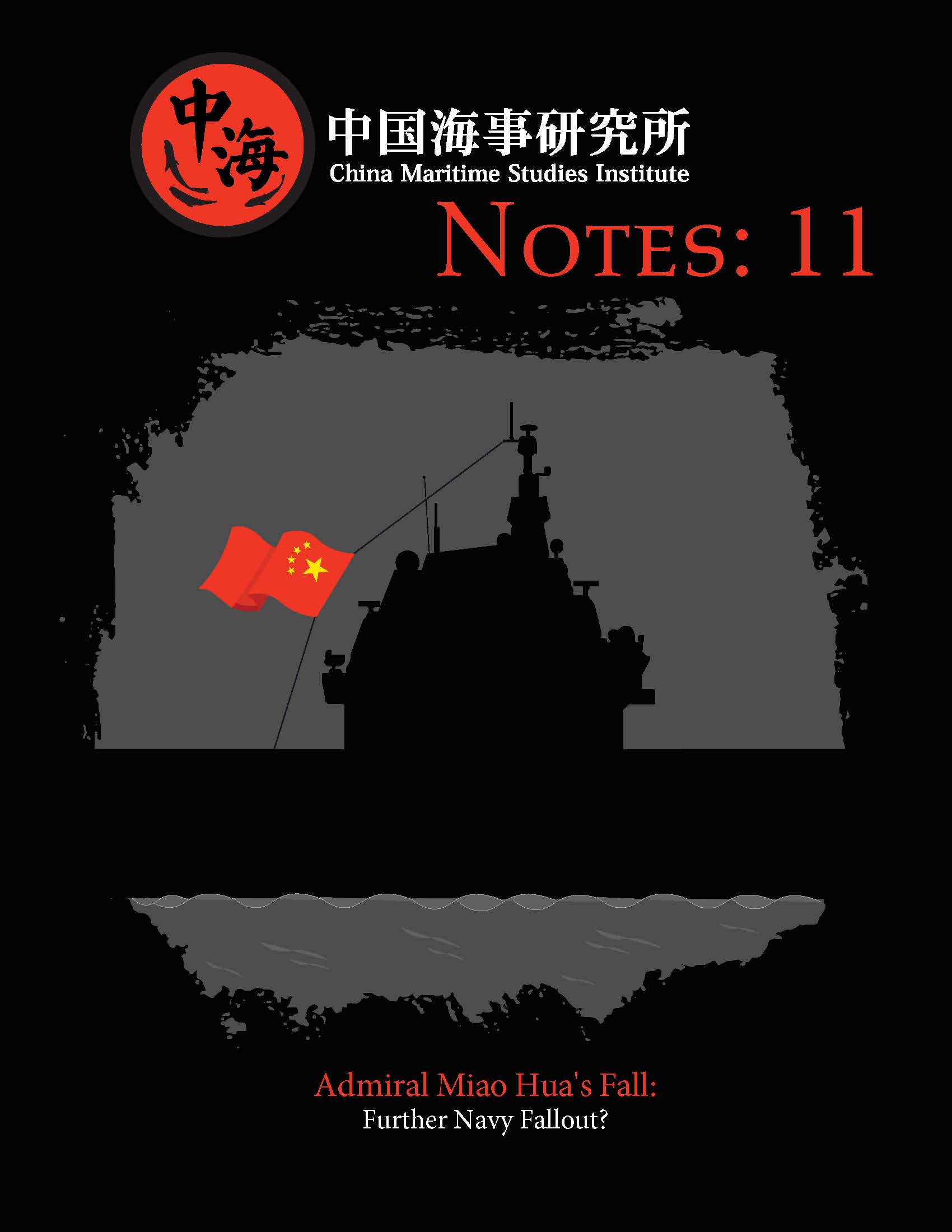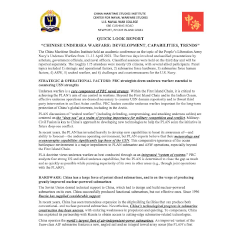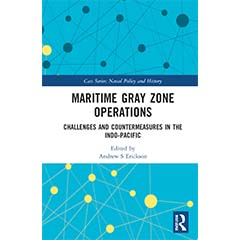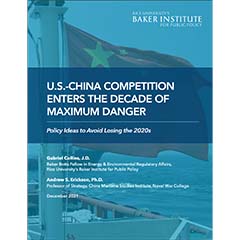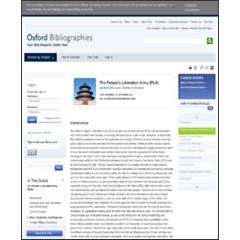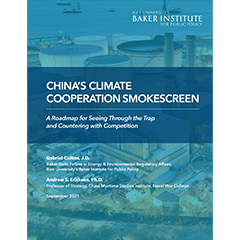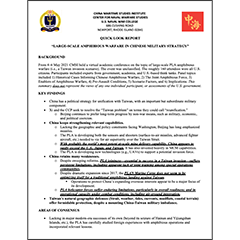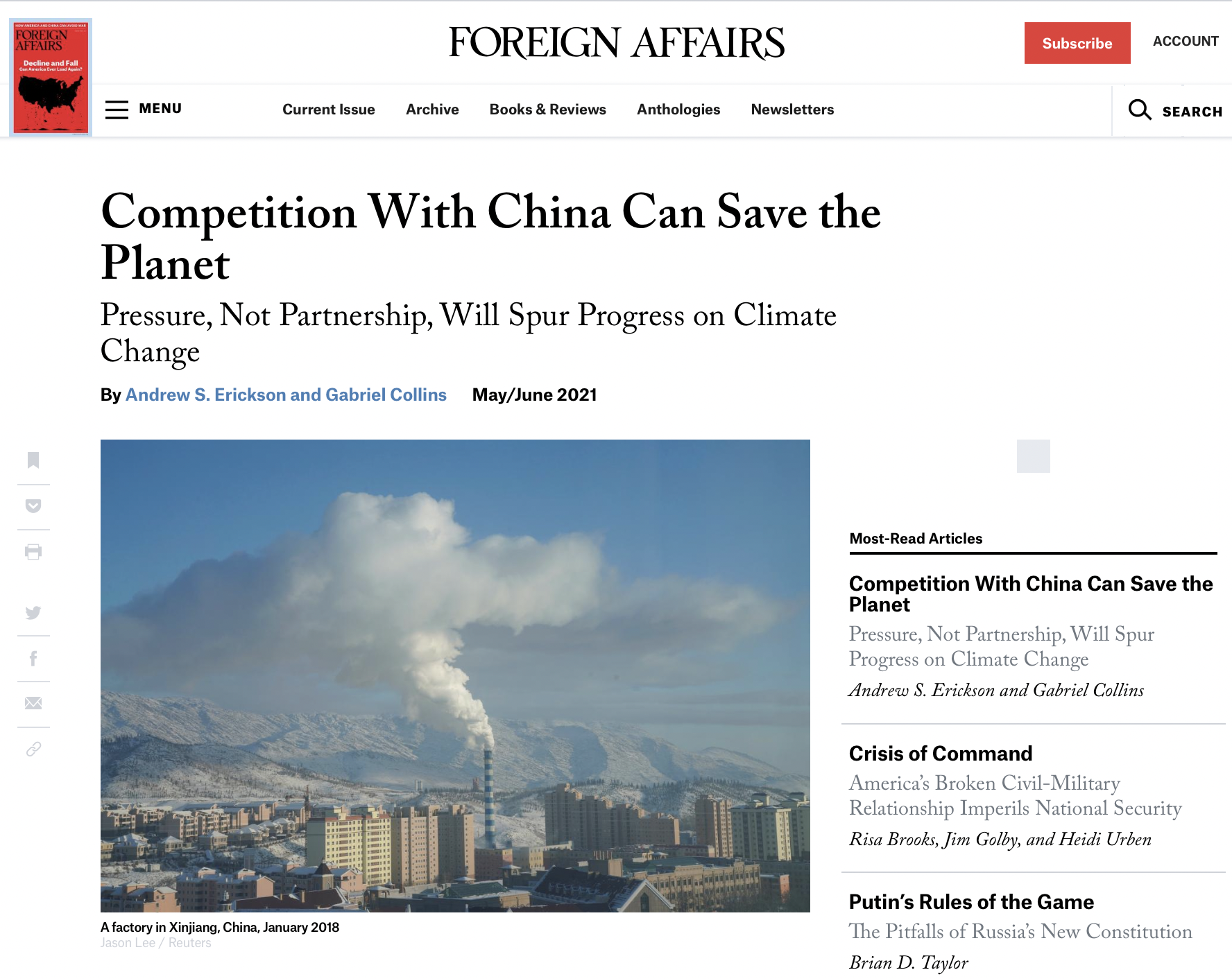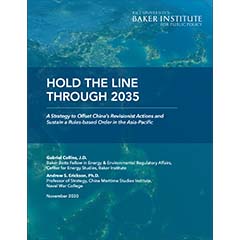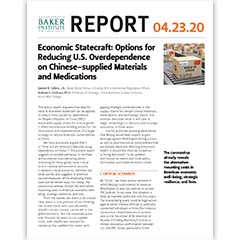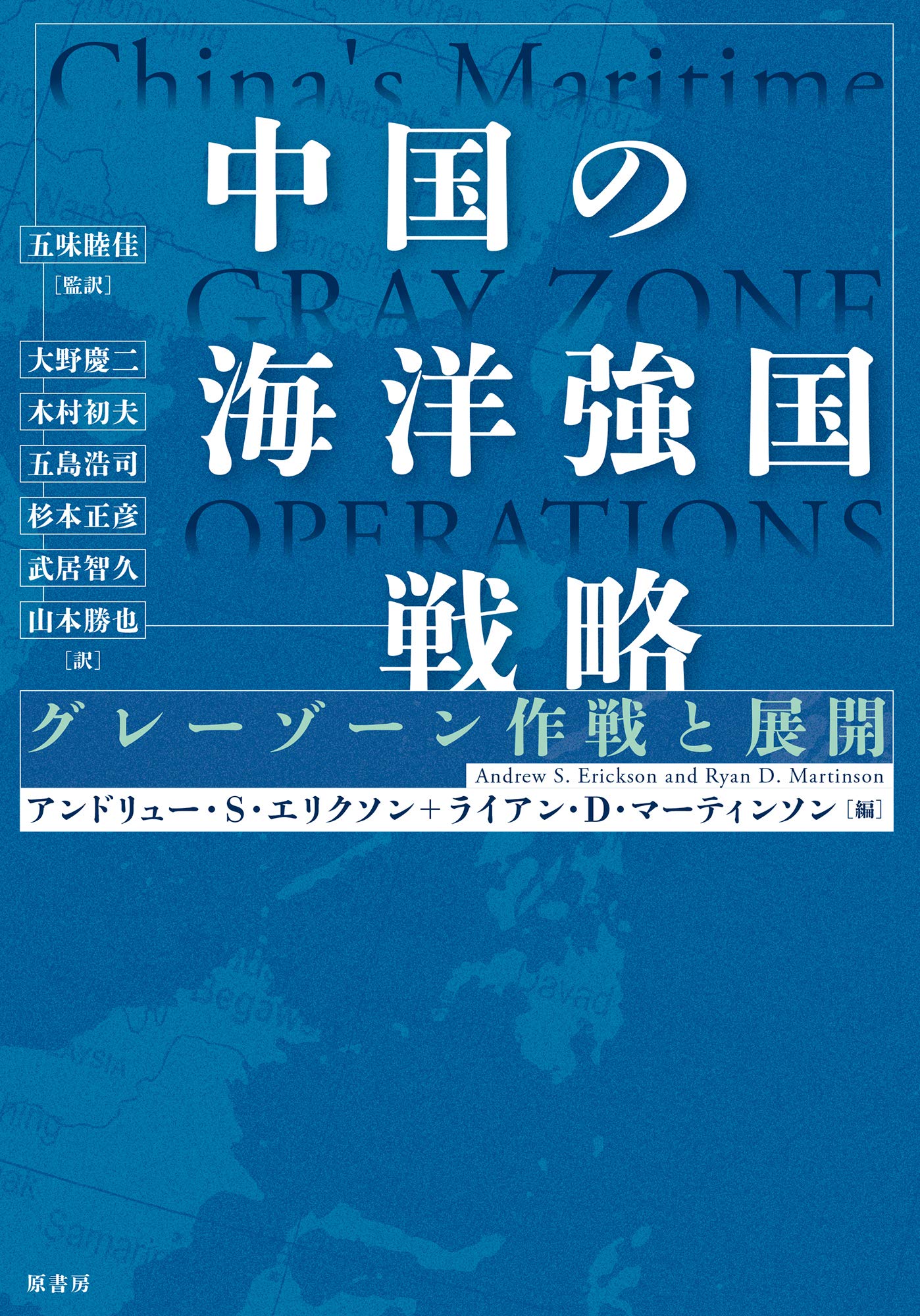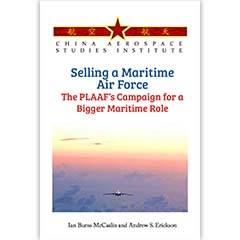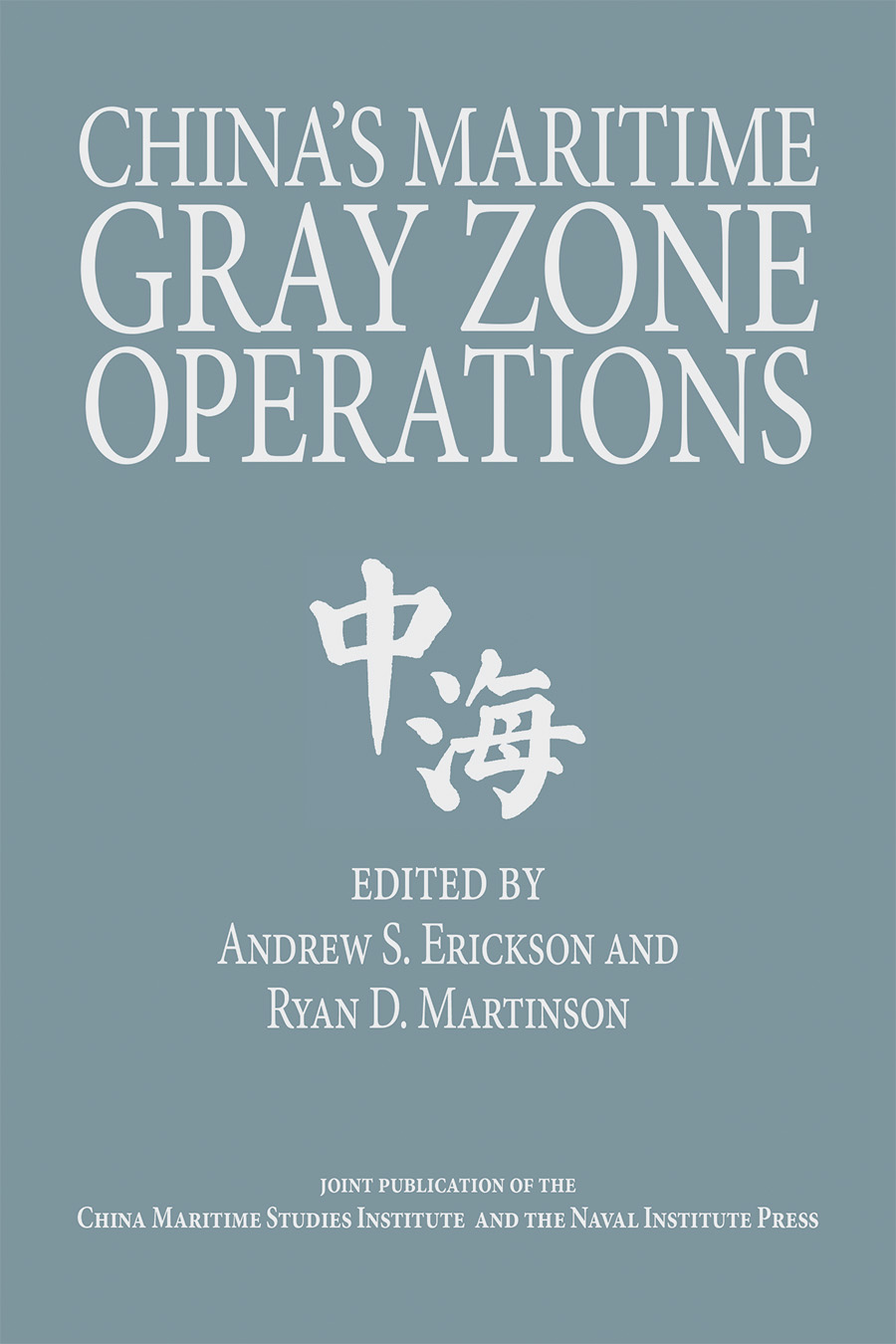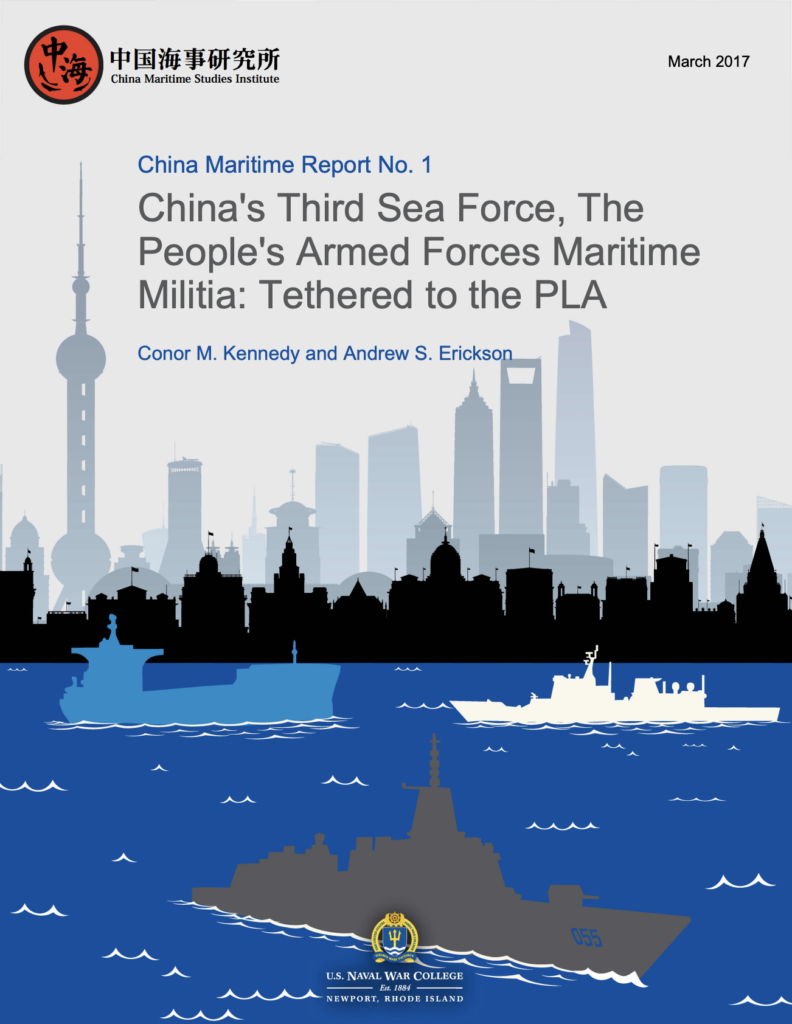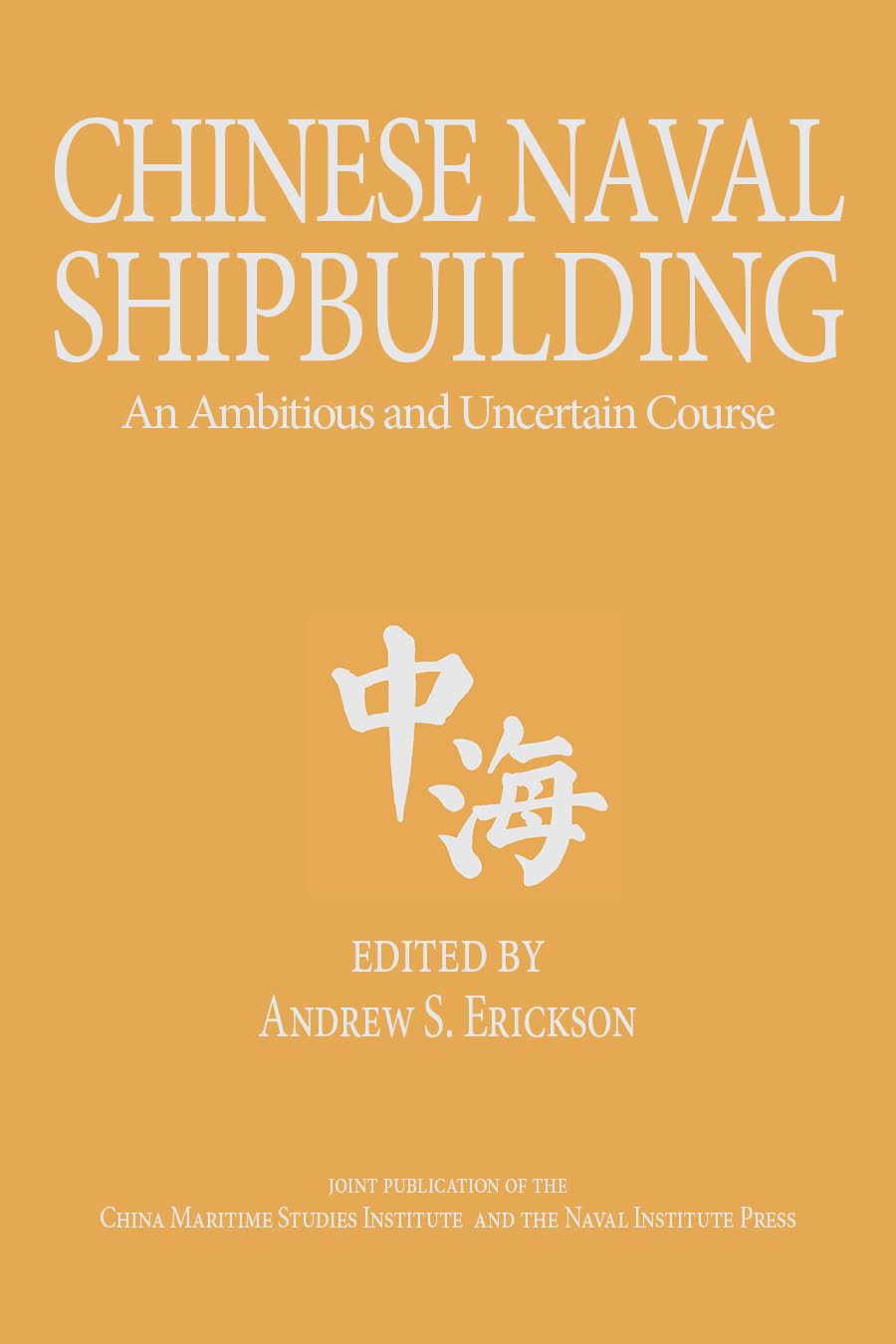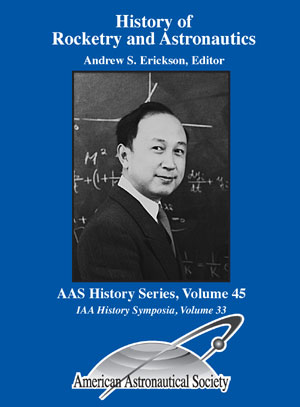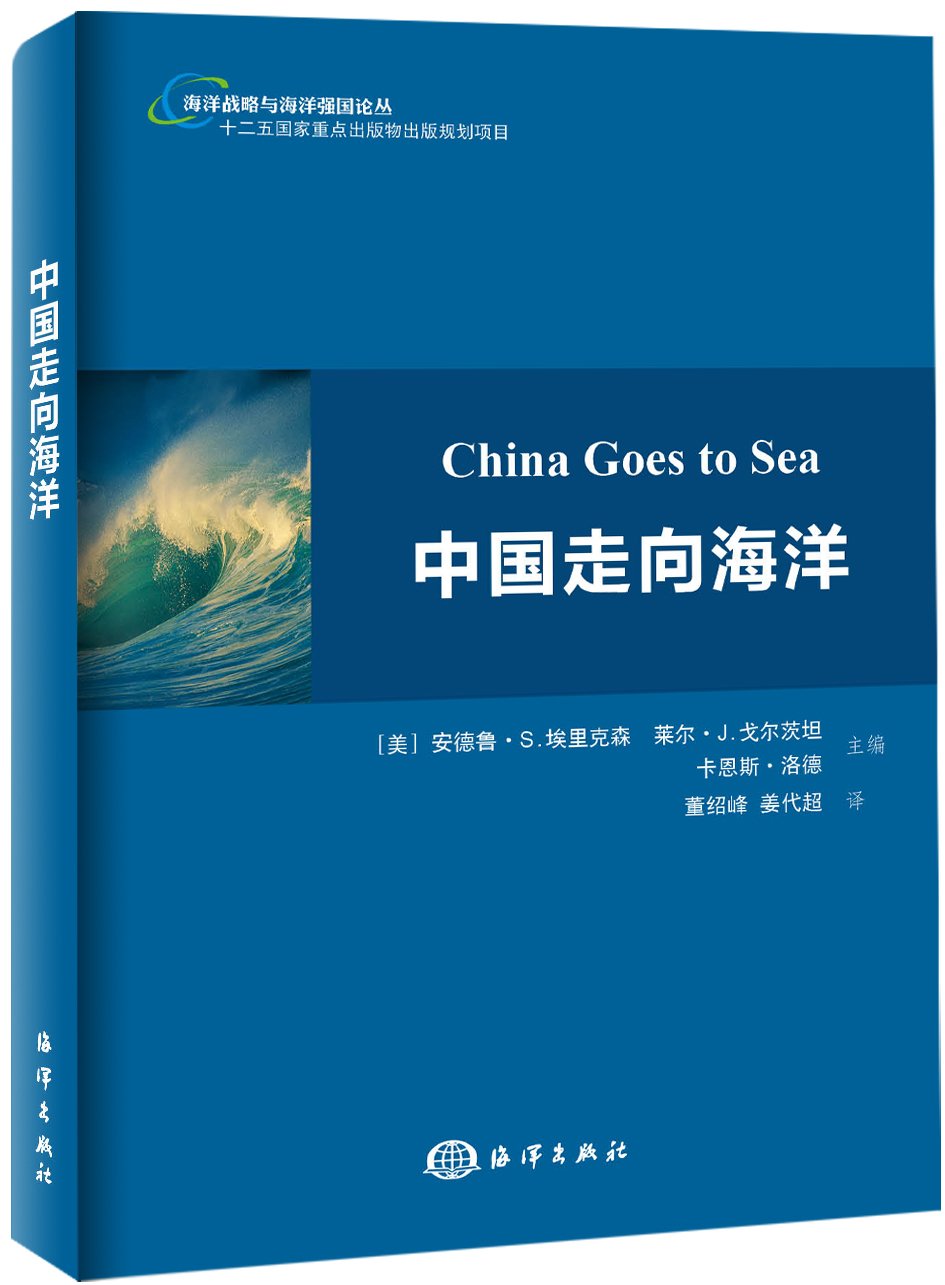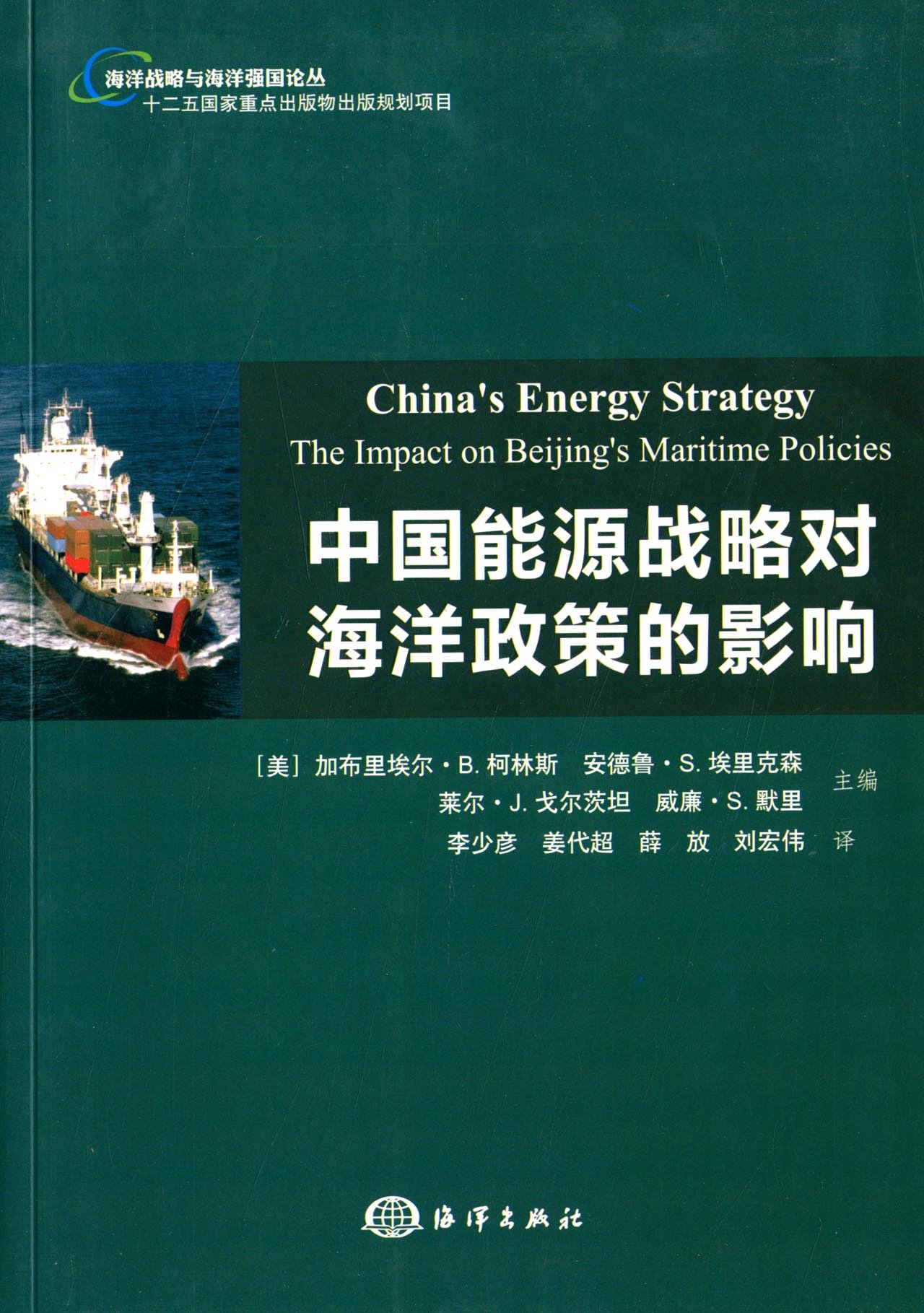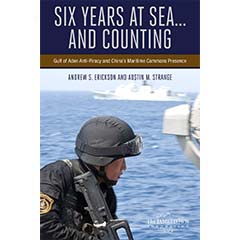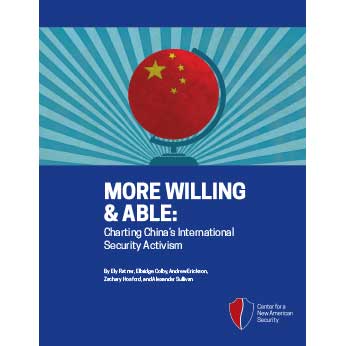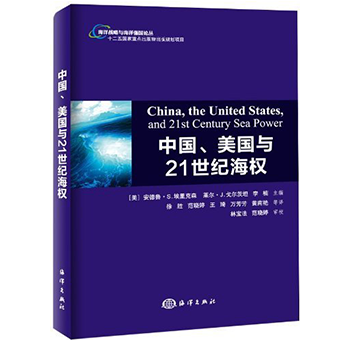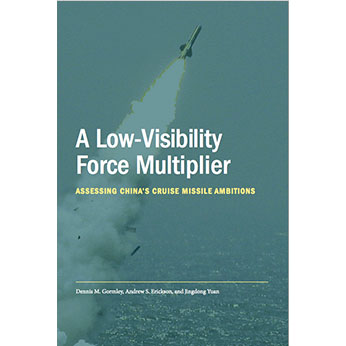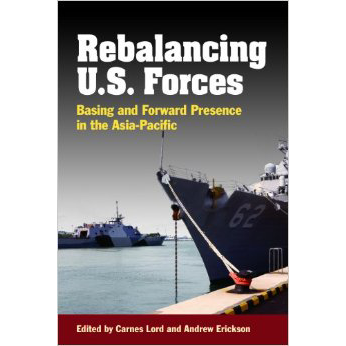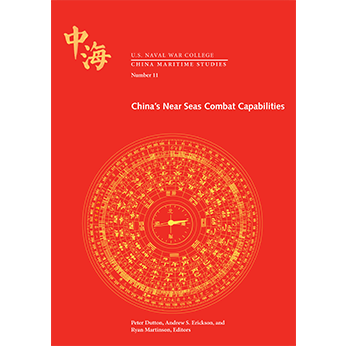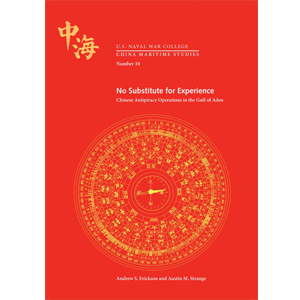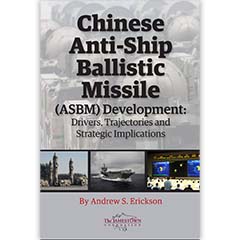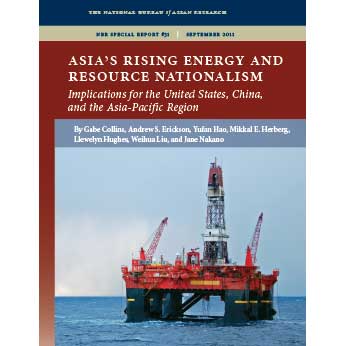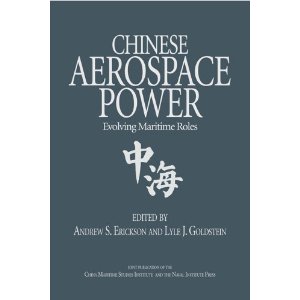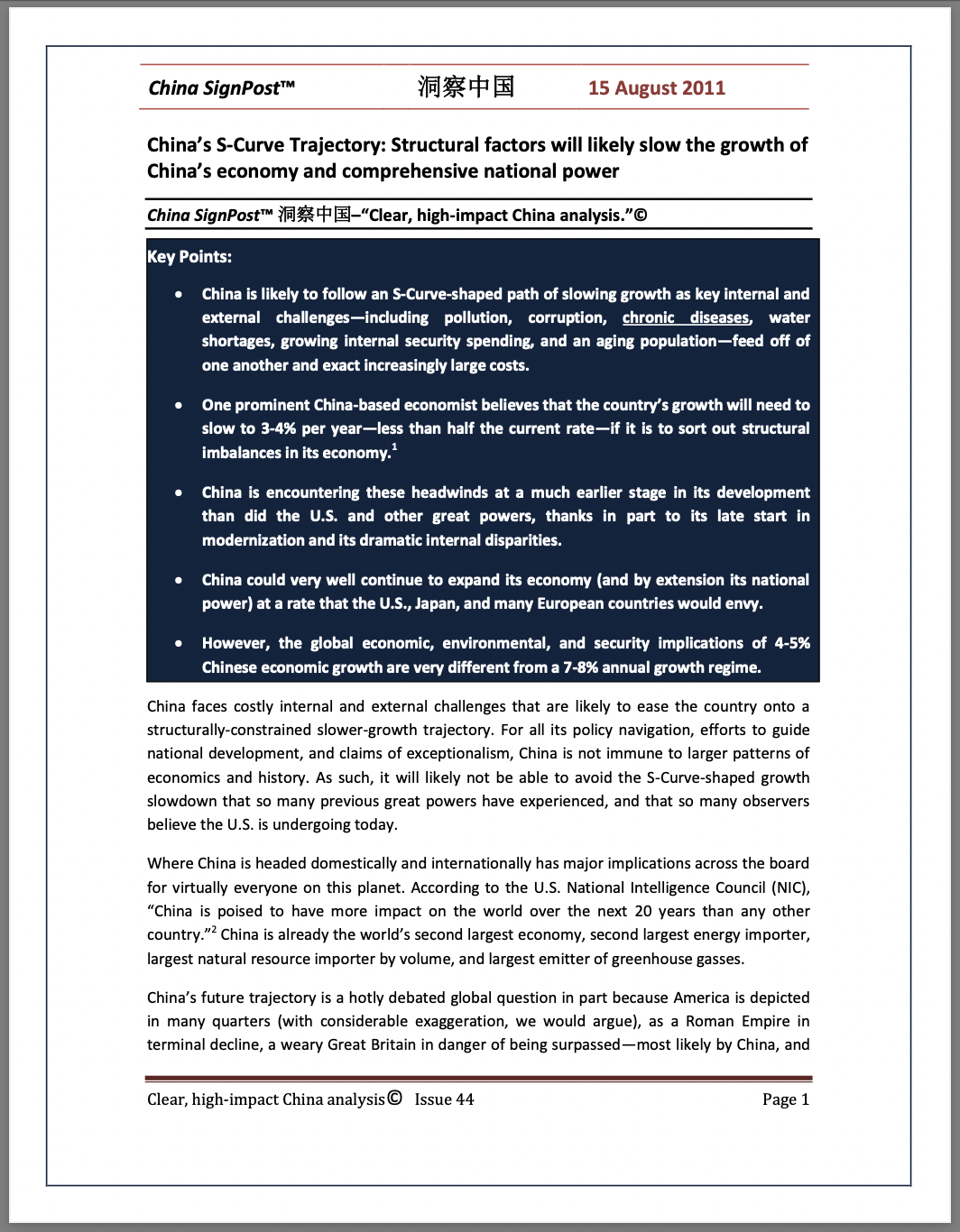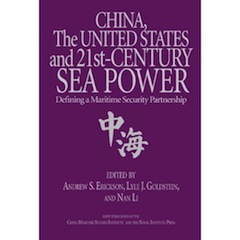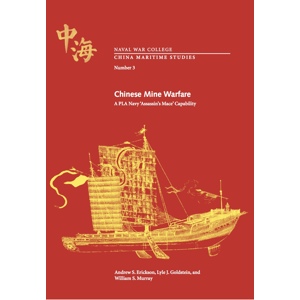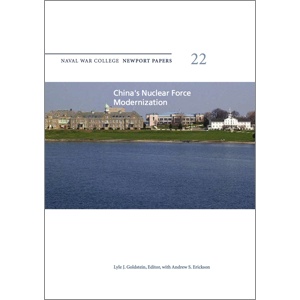The China Navy Leadership Bookshelf
Since Xi assumed power in 2012, an extraordinary array of flag and general officers, as well as defense industry leaders, has been removed. By my running tally, this includes: 15+ senior military officials and defense industry executives; 8 CMC members, including Vice Chairman General He Weidong; 14 military deputies to National People’s Congress (since March 2023 alone); and nearly entire PLA Rocket Force leadership (August 2024).
And Xi’s anti-“corruption” fight is only intensifying. China’s top disciplinary agency, the CCP Central Commission for Discipline Inspection (CCDI), held a plenary session from 6–8 January to address anticorruption priorities for 2025. In opening the event on 6 January, Xi personally set the tone for heightened anticorruption measures in the year ahead. “Corruption is the biggest threat facing the [Communist] Party,” Xi declared. “We must…further strengthen our determination and confidence in the fight against corruption.” Anticorruption will be a leading theme for the foreseeable future; although, with the Party inherently above the law but subject to elite power struggles, graft and influence peddling endemic, and enforcement highly politicized, it must be understood in the PRC’s own context.
Amid all this, dramatic rumors are swirling. “Shoes” are continuing to drop. Hyperbolic headlines surged after Pentagon’s 18 December 2024 China Military Power Report release, with “Impacts of Corruption on the PLA” one of 3 Special Topics. What are the implications for PLA(N) control and capabilities? Some go so far as to conclude that because corruption is so bad, the PLA(N) cannot be very good. That notion I firmly disagree with. In my latest publications, I grapple directly with this important issue, and explain my reasoning.
We should all be able to agree that, with all this going on, it’s never been more important to understand China’s naval leadership! Here I’ve compiled my research on this subject published throughout Xi’s “New Era.” I’ll continue my studies and keep this Bookshelf updated as best I can.
This is all an ongoing work in progress. I’ve done my best to fact check, but this is a constantly-evolving subject, particularly of late; riddled with contradictions and uncertainty… Please kindly call my attention to new developments, data, and sources via https://www.andrewerickson.com/contact/. Many thanks!
MY RESEARCH (CO)PUBLISHED TO DATE:
Christopher H. Sharman and Andrew S. Erickson, Dirty But Preparing to Fight: VADM Li Pengcheng’s Downfall Amid Increasing PLAN Readiness, China Maritime Report 44 (Newport, RI: Naval War College China Maritime Studies Institute, 24 January 2025).
-
Naval War College’s second-most-popular publication with over 1,700 downloads and counting.
From CMSI Director Christopher Sharman:
The drumbeat of China’s Navy leaders purged for corruption is beating loudly. Admiral Miao Hua (苗华) was purged in late November 2024 …. one month later (just weeks ago), the announcement came that Vice Admiral Li Pengcheng (李鹏程), who concurrently held positions of Commander of the Southern Theater Command (STC) Naval Forces and Deputy STC Deputy STC Commander, was also out.
What has been the broader pattern of PLAN flag officer removals over time, and how has it affected the force? If corruption is as endemic as these recent purges suggest, does that reflect negatively on the PLAN as a functioning organization?
This China Maritime Report provides a deep-dive case study into the career rise and fall of Li Pengcheng. It tracks his involvement in historic PLAN milestone events, his leadership of two counter-piracy Gulf of Aden deployments, and how his career had the attention of CMC Chairman, Xi Jinping himself. Li was a modern-day PLAN officer exemplar and destined for positions of greater responsibility. Where did Li run afoul of the system? Why was he removed? More importantly, have there been changes to STC Naval operations since his downfall? This China Maritime Report suggests answers to each of these questions.
The rise and fall of Admiral Li’s career is a useful case study for analyzing the impact of corruption on PLAN operational capabilities. What makes the examination of Li a particularly useful is that his predecessor as the Commander of STC Naval Forces, Vice Admiral Ju Xinchun (鞠新春), suffered Li’s same fate almost exactly one year ago. Comparing and contrasting two consecutive PLAN STC commanders serving in the same capacity, sacked one year apart, provides a robust dataset to analyze. Any manning, training, or equipping impacts on PLAN STC operational trends in 2024 and beyond could suggest a correlation with these PLAN senior leadership purges. This report examines the careers of both Admirals in context.
A key conclusion of this China Maritime Report is that the PLAN may be playing high-stakes musical chairs with its leadership, but it has a deep enough bench of talent to do so without prohibitive problems. When one leader is purged, another is on deck. Politicized corruption investigations and their imposition of costs are fundamentally a speed bump rather than a showstopper. Corruption may contribute to inefficiencies, but it does not curtail PLAN advances. Related removals are neither an indicator of prohibitive incompetence nor a self-defeating constraint on operational capabilities.
This report is rich with citations and references – almost all of which come directly from original PRC Chinese-language sources. It conveys a fascinating story and provides the most detail you will find anywhere about implications stemming from the rise (and fall) of one of the great modern PLAN leaders.
***
Andrew S. Erickson, “China’s Military Power: The Capability Forest Beyond Corruption Trees,” 19FortyFive, 20 December 2024.
This week, the Department of Defense released its twenty-fourth annual China Military Power Report (CMPR). Here are the most important revelations from its 182 pages that informed professionals need to know.
China’s Military Might, Explained
China’s armed forces are massive, well-funded, and modernizing rapidly. The People’s Liberation Army (PLA) is the world’s largest military force, with 2.035 million active, 510,000 reserve, and 500,000 paramilitary personnel. It is funded by the world’s second largest defense budget, which the Pentagon estimates at $330-450 billion in actuality, and further supported by the world’s fourth greatest arms sales. Two things are true at once: China’s military remains riddled with corruption, but is nevertheless engaged under Xi in the most dramatic military buildup seen since World War II. If Xi and his Party Army were as discombobulated as some preoccupied with the latest PLA “palace intrigue” imagine, there’s no way they could be building, deploying, exercising, and preparing the way they clearly are. The report documents numerous elements of that tremendous progress, allowing readers to see for themselves the lush capabilities rainforest flourishing feverishly despite widespread putrefaction and some rotten corruption trees. … … …
Conclusion: Don’t Miss the Forest for the Trees
So much depends on how a problem is framed. Analysts of China’s military should not miss the forest for the trees. If Xi and the PLA were in the disarray that some myopically focused on their system’s chronic corruption imagine, there’s no way China’s military could be developing, deploying, exercising, and otherwise preparing in the ways that the CMPR chronicles. Instead, Beijing is clearly continuing the most dramatic military buildup since World War II. That’s the overwhelming reality we ignore at our peril. The proof is in the pudding, and the Pentagon just served up the biggest public dessert of the year.
How best to prepare these great and growing military forces to “fight and win” against the most capable of opponents is an area of complex challenges but unremitting effort. China is additionally developing significant enabling capabilities in the space, electromagnetic, and cyber domains. How best to support and organize them is a continuing area of focus for Xi. Having created the Strategic Support Force as part of his sweeping military reforms in 2015-16, Xi disestablished it on 19 April 2024. He has reassigned its subordinate forces, the Aerospace Force and the Cyberspace Force, directly under the Central Military Commission. To these, he has added a new arm: the Information Support Force.
This is one of many important examples of Xi’s unstinting determination to meet the requirements of his Centennial Military Building Goal of 2027—his capabilities development deadline for his armed forces to offer, in important part, a full battery of military operational capabilities against Taiwan. Xi’s extreme ambitions face commensurate difficulties, and the United States—together with Allies, partners, and friends—still have options to bolster defenses and deter aggression. But margins are growing thin, and time is running out.
***
Andrew S. Erickson and Christopher H. Sharman, “Admiral Miao Hua’s Fall: Further Navy Fallout?” CMSI Note 11 (Newport, RI: Naval War College China Maritime Studies Institute, 28 November 2024).
CLICK HERE TO DOWNLOAD A CACHED PDF COPY.
From CMSI Director Christopher Sharman:
-
Admiral Miao Hua has been suspended from duties as a member of China’s Central Military Commission and Director of the CMC Political Work Department. Miao’s position, which oversees all senior People’s Liberation Army (PLA) promotions, may have significant ramifications for his patronage network—including “current” Defense Minister Admiral Dong Jun and possibly Secretary of the CMC’s Politics and Law Commission Admiral Wang Renhua, among others.
-
This is the first time the CMC has two positions (one-third of six total) vacant simultaneously. The only other time China’s highest military body experienced such upheaval in recent years involved the purging of Vice Chairmen General Xu Caihou and General Guo Boxiong.
-
Admiral Miao is the seventh CMC member to be purged since Xi assumed power in 2012. The humiliation of his public removal is especially embarrassing because Xi promoted him to full admiral on 31 July 2015 and elevated him to the CMC in October 2017. His suspension suggests Xi, or others, may have wanted to make his removal an example for the PLA.
-
Admiral Dong Jun, China’s Minister of National Defense, may be caught up in this purge. Dong has close ties to Miao and was absent from Singaporean Vice Admiral Aaron Beng’s introductory PRC visit (24–27 November 2024). At a minimum, Admiral Dong normally would have hosted an office call for VADM Beng during his visit.
-
Admiral Miao’s removal suggests Xi remains bore-sighted on achieving China’s 2027 Centennial Military Building Goal and seeks to ensure his armed forces reach maximum preparation for Taiwan contingencies on his watch, even at the cost of short-term setbacks and bureaucratic churn.
-
In August 2024, the two top Generals commanding the PLA Rocket Force were removed, together with other leading PLARF officers. Admiral Miao’s suspension and the possible implication of Admiral Dong Jun could suggest Xi has shifted his purging focus to the PLA Navy (PLAN).
About the Authors
Dr. Andrew S. Erickson is Professor of Strategy at CMSI. CAPT Chris H. Sharman, USN (Ret.) is Director of CMSI. They are solely responsible for the views expressed here, which are based solely on open sources, as well as any errors herein; they made every effort to double-check data during the less than twenty-four hours between the official announcement of Admiral Miao’s suspension and this note’s publication. Unless otherwise specified, date ranges represent an officer’s time in service for their career capstone position, from which they typically retired or were purged directly. The authors thank Ken Allen and numerous anonymous reviewers for invaluable inputs.
The views the authors express here are theirs alone and do not necessarily represent the views, policies, or positions of the U.S. Department of Defense or its components, to include the Department of the Navy or the U.S. Naval War College.
***
Andrew S. Erickson, “Admiral Wang Renhua: Exemplifying Jointness and Oversight for China’s Navy amid Xi’s Grade-and-Rank Reforms,” CMSI Note 5 (Newport, RI: Naval War College China Maritime Studies Institute, 11 April 2024).
From CMSI Director Christopher Sharman:
China Maritime Studies Institute (CMSI) Friends and Colleagues –
CMSI is pleased to provide you with CMSI Note #5. It elucidates the background, significance, and implications of the 28 March promotion of Admiral Wang Renhua (王仁华) to full Admiral (three-star rank in the PLA); and the apparent elevation of CMC Politics and Law Commission he heads to Theater Command Leader grade, on the same level as the theaters and services.
This CMSI Note continues our efforts to focus on the People in China’s Military Maritime Domain.
What do you know about the CMC’s Politics and Law Commission? What role will Admiral Wang play? What might it mean for the People’s Liberation Army Navy (PLAN) specifically? Finally, what does this promotion suggest about the future of grade-and-rank promotions of other senior officers?
Dr. Andrew Erickson tackles these questions and so many more in this comprehensive CMSI Note that examines Wang, his career as a political officer, and his role at the Politics and Law Commission. His painstaking research efforts helps to paint a picture of this Navy officer and a CMC Commission you may know very little about.
Summary
A microcosm of China’s ongoing military advancement, Admiral Wang Renhua (王仁华) embodies some of the subtle, complicated efforts underway to make the People’s Liberation Army (PLA) a sophisticated fighting force that is more than the sum of its parts and whose human capital is narrowing the gap with its profusion of formidable hardware. On 28 March 2024, in a ceremony at the Central Military Commission (CMC)’s Bayi Building in Beijing, Xi Jinping concurrently promoted Wang to full admiral—three-star rank in the PLA (which, unlike the U.S. military, does not have a four-star rank)— and, apparently, Theater Command Leader grade.2 Doing so in his capacity as CMC Chairman, Xi also oversaw the implementation of one of the key new management dynamics nearly a decade into his sweeping military reforms: simultaneous promotion in grade and rank in an effort to transition from the PLA’s longstanding grade-centric system to a more Western-style rank-centric system.3 As in other professions, approaches to promoting personnel matter greatly in military performance. China heretofore employed a billet-grounded grade system, whereby not only every officer but also every organization is assigned one of fifteen grades; whereas agile, professional Western militaries have long benefitted from an individually-portable rank system. China’s transformation toward the latter approach remains a work in progress, but Wang’s trajectory is an important bellwether of things to come. More broadly, Wang’s career advancement and rise to CMC insider status as the Secretary of the CMC’s Politics and Law Commission also offers living testimony to other PLA efforts underway, particularly at increasing jointness. His varied resume includes a shift from Army to Navy officer in 2017 as well as service in the East Sea Fleet and at the Jiuquan Satellite Launch Center.4
CMSI’s Perspectives and Key Takeaways:
- Admiral Wang Renhua’s promotion is the latest indication of efforts to synchronize grade-and-rank promotions at the full admiral/general level (three stars in the PLA).
- Wang’s role may be best understood as a military loyalty enforcement boss.
- A key responsibility for Wang may well be to root out and destroy Xi’s enemies within the PLA.
- A potential component of Wang’s portfolio in the navy realm could be to maintain a tight grip on the wardrooms aboard China’s growing fleet of nuclear-powered ballistic missile submarines (SSBNs).
- Having Wang serve in the Navy, and currently as head of the CMC’s powerful Politics and Law Commission, helps the PLA shift to a more joint force as part of Xi’s post-2015 reforms.
- Wang is not originally from the Navy and does not represent the institutional interests of the PLA Navy.
- It is not uncommon for a PLA Army political officer to switch uniforms to the Navy and retain them from that time forward, as Wang has done. … … …
***
Andrew S. Erickson, “China’s New Military Commanders Reflect Xi Jinping’s Naval Ambitions,” Harvard Fairbank Center Blog Post, 23 February 2024.
CLICK HERE TO DOWNLOAD A FULL-TEXT PDF.
By Andrew S. Erickson, Visiting Professor, Government Department, Harvard University; Professor of Strategy, U.S. Naval War College (NWC) China Maritime Studies Institute (CMSI); and Fairbank Center Associate in Research. The views expressed in this piece are the author’s own and do not represent any institution with which he is, or has been, affiliated. He thanks Ken Allen for helpful input. This analysis draws in part on Naval War College China Maritime Studies Institute Notes #1 and #2, which he recently coauthored with CMSI Director Christopher Sharman.
National leaders generally want capable militaries, but no other nation’s leader is overseeing increasing military capabilities at anything remotely approaching the scope, scale, and speed we are witnessing under Xi Jinping. China’s paramount leader is a man in a hurry, determined to resolve disputed sovereignty claims—none more important than achieving control over Taiwan and ensuring unification on his terms. Xi would prefer to recover Taiwan and achieve other top-priority objectives without initiating outright conflict. But he believes that the capability to do so is essential to coercing adversaries into submission, if possible, and compelling them militarily if not. Two new military leadership appointments reflect Xi’s deadly serious aims.
First, the world’s largest navy by number of ships has a new helmsman. On December 25, 2023, as Central Military Commission (CMC) Chairman, Commander-in-Chief Xi promoted Vice Admiral Hu Zhongming (胡中明) to three-star Admiral in rank and Theater Command Leader in grade and appointed him Commander of the People’s Liberation Army (PLA) Navy. Second, Hu’s predecessor, Admiral Dong Jun (董军),[1] was named the People’s Republic of China (PRC) Defense Minister four days later.
Embodying Xi’s requirement that his armed forces prepare credible warfighting capabilities, Hu and Dong are the latest in a trend of PLA Navy (PLAN) leaders bringing increasing operational expertise and focus. Hu is well-positioned to capitalize on his predecessors’ foundation and marshal future efforts toward closing key warfighting gaps. The goal is for the navy to offer increasingly specialized contributions within an ever-more-integrated military capable of waging and winning modern wars, within which naval forces have a vital role.
Hu: Vanguard Submariner-Bureaucrat

The PLAN’s tenth Commander in its seventy-four-year history, Hu brings extensive organizational and operational experience to the job. Of particular note: his technical and operational prowess regarding submarines. Born in Qingdao in 1964, Hu began his career in China’s submarine force and served with distinction in a wide variety of roles, including commanding both a submarine and one of China’s two bases for nuclear-powered submarines. In 2009, as a submarine Commanding Officer, Hu won accolades for averting disaster during sea trials, improving testing procedures, and innovating training and real-time emergency communications measures.[2]
An overriding consideration behind putting a submariner in charge may have been to ensure that the PLA Navy’s long-troubled nuclear submarine expansion program advances safely and effectively. The navy’s surface fleet and anti-surface mission and missiles—backstopped by still greater forces ashore—have grown tremendously, but its submarine leadership and training apparently still lag overall.[3] Here, Hu has his work cut out for him.[4]
In addition to submarine prowess and topline bureaucratic experience, Hu’s career reflects Xi’s sweeping military restructuring since 2016. China’s joint Theater Commands offer a more operationally-relevant means of organizing PLA/Navy forces than the previous, Army-dominated Military Regions. From December 2019 to December 2021, Hu served as the Commander of the Northern Theater Command Navy and as a concurrent Deputy Commander of the Northern Theater Command.
Dong: Warship-Command Center Leader Turned Spokesman

Born in Yantai, in 1961, former ninth PLA Navy Commander Admiral Dong Jun is now the country’s fourteenth Defense Minister—the first from his service to assume the role.[5] In a break from the traditional path through theater service components and their command, Dong was a career surface warfare officer with a focus on theater joint operations. Dong had operational assignments in the Eastern Theater Command, responsible for PLA activities regarding the East China Sea, including vis-à-vis Taiwan; and the Southern Theater Command, responsible for PLA activities regarding the South China Sea. With the limited exception of the Yellow Sea, these two contested seas contain all of Beijing’s unresolved island/feature and maritime sovereignty claims, which China under Xi is now pursuing with increasing power and determination. The fact that Dong is a naval flag officer, with the aforementioned set of experiences, makes him likely to be particularly well-versed in addressing territorial disputes with his interlocutors. He will also likely provide useful inputs to the PLA’s Joint Staff Department regarding joint operations, thereby helping better integrate China’s Navy into them.
From July 2013 through November 2014, Dong served as one of the Deputy Commanders of the East Sea Fleet, as well as Commander of the newly-established East China Sea Joint Operations Command Center. Of pioneering significance, this hub became the PLA’s first full joint-operations command organization upon its establishment in 2013, thereby helping better coordinate forces in theater. This is a key requirement of sophisticated sub-war operations and modern warfare alike—precisely the full range of options Xi wants in his military toolbox. From January 2017 through March 2021, Dong served as one of the concurrent Deputy Commanders of the Southern Theater Command and Commander of the Southern Theater Command Navy.[6]
As Defense Minister, Dong is a diplomat-liaison representing the PLA, and ultimately the CMC under Xi, in interactions with foreign militaries. As the PLA engages in drills and other pressure operations vis-à-vis Taiwan during the incoming Lai-Hsiao Administration,[7] Dong will explain Beijing’s activities, intentions, conditions, and expectations to the outside world. In doing so, Dong draws on years of interactions with foreign naval and military leaders through exercises, meetings, and elite communications. As Defense Minister, Dong lacks operational command over PLA forces; however, as his predecessors did, he is likely to soon become a concurrent member of the CMC, China’s highest military decision-making body. CMC Members, including the two Vice Chairmen directly under Xi himself, would have operational command of the entire PLA during wartime.
The Shoulders of Giants: Building on a Long-term Modernization Strategy
China’s Navy leaders are taking their service to a new level for a new era. They will help guide China’s military as it fulfills the New Historic Missions assigned by Hu Jintao in 2004 and operates globally on a routine basis.[8]
With the most fundamental structural aspects of Xi’s defense reforms largely complete, Navy leaders are no longer preoccupied with organizational change, and can focus instead on preparation for warfighting. With their operational background, they can work to ensure that China’s armed forces are postured for, and more capable regarding, key contingencies, e.g., with respect to Taiwan. That starts with service expertise. Coming from the Navy, Admirals Dong and Hu likely know each other well and will have a good working relationship. This will afford China’s Navy unique insights into CMC decision-making. Dong and Hu will also serve, respectively, as the face of China’s military and navy—the most outwardly focused of all military services.
The first PLA Navy Commander, Xiao Jinguang, who retired in 1979,[9] pioneered a makeshift “hodgepodge fleet,” taking guerilla strategy and force to sea just sufficient to wrest the vast majority of offshore islands along China’s coastline from Kuomintang control—leaving an enduring imprint on the Navy’s ways of war.[10] The third PLA Navy Commander, Admiral Liu Huaqing, who served until 1988, brought the navy from Maoist marginalization to wholesale modernization. Under his leadership, in 1985, the service received its first strategy, Near Seas Active Defense, focused on the Yellow, East, and South China Seas.[11] From 1993-1998, Liu helped guide the PLA Navy’s future as the first and only CMC Vice Chairman of naval background.
The seventh PLA Navy Commander, Admiral Wu Shengli, in office from 2006-2017, served as a full member of the CMC’s Central Committee. He systematically transformed China’s Navy into a fighting force with comprehensive capabilities.[12] As part of this decisive decade of PLA Navy improvement, in 2015 Xi assigned the service a second layer of strategy—Far Seas Protection.[13]
Starting around 2019, two years after Admiral Wu’s comprehensive drive concluded, China’s Navy has been pursuing a combination of “near seas defense, far seas protection, [global] oceanic presence, and expansion into the two poles [Arctic and Antarctic].”[14] Now the experiences of China’s ninth and tenth Navy Commanders, Admirals Dong and Hu, provides them with unique maritime operational expertise which will enhance their ability to help shape future PLA joint operations with the other services.
Full Steam Ahead: Will Party Control Get in the Way?
Clearly the PLA Navy is improving rapidly and comprehensively, however unevenly. Nuclear submarine propulsion and several other apex technologies aside, military hardware development appears to be outpacing that of human and organizational capital. Narrowing that gap will be a key task for Admiral Hu throughout his time as PLA Navy Commander: his core responsibility is to crew, train, and equip the force.
Many aspects of PLA Navy leadership, personnel, organization, training, and education remain unclear to outside observers, however. Some areas may even remain uncertain to the PLA Navy itself in terms of caliber and effectiveness where and when it matters most. Under the PLA’s dual command system, for example, every PLA Navy organization, including its ships, embarks a military commander and a political commissar, who collaborate in the service of military and political objectives alike.[15]
That system typically requires near-daily meetings of their embarked Party Standing Committees, a floating microcosm of how Party organs conduct business across China and around the world; or pre-authorized orders, neither of which may work as desired or predicted in complex crisis conditions—let alone the fog of war.[16]
China’s political commissar system is far more intrusive, and potentially cumbersome, than the oversight role employed in the United States and other Western countries where civilians oversee the military and its operations. Beijing’s approach, by contrast, requires committee decision-making at each level of operations, from strategic to tactical.
Understanding these crucial areas will require much additional research. But scholars and analysts must hurry: China’s Navy is making great waves, which are now reaching all shores. And the risk of a tidal wave across the Taiwan Strait grows with each passing year.
[1] 责任编辑: 温腾 [Editor in Charge: Wen Teng], “中央军委举行晋升上将军衔仪式 习近平颁发命令状并向晋衔的军官表示祝贺” [The Central Military Commission Held a Ceremony for Promotion to the Rank of General. Xi Jinping Issued a Certificate of Order and Congratulated the Officers], 人民日报 [People’s Daily], December 25, 2023, https://wap.peopleapp.com/article/7297251/7135115.
[2] 本报特约通讯员 黄育平 叶文勇 [Special correspondents Huang Yuping and Ye Wenyong], “潜艇艇长胡中明——试验试航不惧险” [Submarine Captain Hu Zhongming–Experimentation and Sea Trial without Fear of Danger], in “人民海军走过六十年风雨征程一代新型舰长走向大洋” [The People’s Navy Has Gone through Sixty Years of Ups and Downs, And a New Generation of Captains Has Gone to the Ocean], 解放军报 [PLA Daily], April 24, 2009, 3.
[3] China Maritime Studies Institute, “Chinese Undersea Warfare: Development, Capabilities, Trends,” Quick Look Conference Summary (Newport, RI: Naval War College, May 5, 2023), https://www.andrewerickson.com/2023/05/quick-look-summary-cmsis-11-13-april-2023-conference-chinese-undersea-warfare-development-capabilities-trends/.
[4] Christopher H. Sharman and Andrew S. Erickson, “Admiral Hu to the Helm: China’s New Navy Commander Brings Operational Expertise,” CMSI Note 1 (Newport, RI: Naval War College China Maritime Studies Institute, December 27, 2023), https://digital-commons.usnwc.edu/cmsi-notes/1/. See also Ryan D. Martinson, “Admiral Hu Zhongming: The Chinese Navy’s ‘Multi-Faceted’ New Leader,” Jamestown China Brief 24.2 (January 19, 2024), https://jamestown.org/program/admiral-hu-zhongming-the-chinese-navys-multi-faceted-new-leader/.
[5] Andrew S. Erickson and Christopher H. Sharman, “Admiral Dong Jun Engages Friends and Foes: China’s First Naval Defense Minister Brings Joint Operational Experience,” CMSI Note 2 (Newport, RI: Naval War College China Maritime Studies Institute, December 30, 2023), https://digital-commons.usnwc.edu/cmsi-notes/2/.
[6] Of note, however, following the eleventh PLA force reduction and major reorganization of the PLA starting in January 2016, Xi appointed Admiral Yuan Yubai in January 2017 as the commander of the Southern Theater Command. Yu became the first PLAN commander of a Theater Command; however, in July 2021, Yu was replaced by an Army general. Currently, no PLAN admiral commands a Theater Command.
[9] For background on PLAN Commanders Xiao through Wu, as well as corresponding political commissars, see China’s Navy 2007 (Suitland, MD: Office of Naval Intelligence, 2007), 11–16. For further context regarding PLAN organizational structure and leadership, see The People’s Liberation Army Navy: New Capabilities and Missions for the 21st Century (Suitland, MD: Office of Naval Intelligence, 2015), 29–36, https://www.oni.navy.mil/Portals/12/Intel%20agencies/China_Media/2015_PLA_NAVY_PUB_Interactive.pdf?ver=2015-12-02-081058-483.
[10] Toshi Yoshihara, Mao’s Army Goes to Sea: The Island Campaigns and the Founding of China’s Navy (Washington, DC: Georgetown University Press, 2023).
[11] Andrew S. Erickson, “The Ryan Martinson Bookshelf: Illuminating Xi/China’s Maritime Policies, Forces & Ops, including Latest re Whitsun Reef/Spratlys,” China Analysis from Original Sources 以第一手资料研究中国, June 14, 2021, https://www.andrewerickson.com/2021/06/the-ryan-martinson-bookshelf-illuminating-xi-chinas-maritime-policies-forces-ops-including-latest-re-whitsun-reef-spratlys/.
[12] Andrew S. Erickson, “The Next Generation of China’s Navy: Transformation and Transition for the PLAN,” The Diplomat Magazine 27 (February 2017), https://magazine.thediplomat.com/#/issues/-Kb8qA3vzn4yItWpksgI/preview/-Kb8qHwtpjJQ5-1syNjY; Andrew S. Erickson, “China’s Naval Modernization: The Implications of Seapower,” World Politics Review, September 23, 2014, https://www.worldpoliticsreview.com/wp-content/uploads/2014/09/WPR_ChinaNavy_09232014_1.pdf.
[13] Ryan D. Martinson, “China’s Oceanic Aspirations: New Insights from the Experts,” Orbis66.2 (Spring 2022): 249–69, https://www.sciencedirect.com/science/article/abs/pii/S0030438722000126.
[14] Ryan D. Martinson, “The Role of the Arctic in Chinese Naval Strategy,” Jamestown China Brief 19.22 (December 20, 2019), https://jamestown.org/program/the-role-of-the-arctic-in-chinese-naval-strategy/.
[15] Captain Jeff W. Benson, U.S. Navy, and Zi Yang, “China’s Dual Command at Sea,” U.S. Naval Institute Proceedings 147.3 (March 2021), https://www.usni.org/magazines/proceedings/2021/march/chinas-dual-command-sea.
[16] Jeff Benson and Zi Yang, Party on the Bridge: Political Commissars in the Chinese Navy(Washington, DC: Center for Strategic and International Studies, June 29, 2020), https://www.csis.org/analysis/party-bridge-political-commissars-chinese-navy.
***
Andrew S. Erickson and Christopher H. Sharman, “Admiral Dong Jun Engages Friends and Foes: China’s First Naval Defense Minister Brings Joint Operational Experience,” CMSI Note 2 (Newport, RI: Naval War College China Maritime Studies Institute, 30 December 2023).
From CMSI Director Christopher Sharman:
China’s People’s Liberation Army (PLA) has a new leader – and he is a Navy guy!
On 29 December, Admiral Dong Jun was appointed China’s 14th Minister of National Defense. Admiral Dong Jun’s impressive career as a People’s Liberation Army Navy (PLAN) officer will certainly influence how he executes his new role.
This analysis focuses on Dong’s formative experiences as a naval officer, and their potential implications within the maritime domain; with particular emphasis on Dong’s liaison role – representing the PLA, and ultimately the Central Military Commission (CMC), in interactions with foreign militaries.
Dong’s unprecedented background as the PLAN Commander reflects serious joint and naval focus under Xi with growing potential applications to disputed sovereignty claims in the East and South China Seas—none more important than Taiwan.
But what do you know about Admiral Dong’s Navy career? What assignments have shaped his thinking? What joint experiences does he have that enable him to assume this influential position?
The China Maritime Studies Institute (CMSI) is pleased to bring you CMSI Note #2, “Admiral Dong Jun Engages Friends and Foes: China’s First Naval Defense Minister Brings Joint Operational Experience.” We are publishing this note just one day after the announcement of Admiral Dong’s appointment to serve as the PLA Minister of National Defense.
“CMSI Notes” are a new product line from the team at CMSI. They are short quick turn analysis of high-profile China maritime events or topics that have critical policy, DoD, and U.S. Navy significance. CMSI Notes are designed to be a timely reference for senior DoD/Navy leaders, warfighters, and policymakers to help inform both near term and future decision-making. I encourage you to read through the attached CMSI note and forward it to those who need to see it today.
This CMSI Note, along with our first note published on 27 December titled, “Admiral Hu to the Helm,” will be posted shortly on the CMSI webpage. Considering this is a holiday weekend (and unlikely to be posted until next week), we encourage you to circulate this note to your distribution lists to ensure the right folks have eyes on to support the inevitable questions about Admiral Dong that will come early next week.
My profuse thanks to Dr. Andrew Erickson and the whole CMSI team who helped pull our second CMSI Note together so quickly. Andrew’s decades of experience and laser focus on China’s Navy enabled our team to get this note to your in-boxes within ~24 hours of the public announcement of Admiral Dong’s appointment.
Very Respectfully,
Christopher H. Sharman
Director
China Maritime Studies Institute (CMSI)
***
Andrew S. Erickson, “When China’s Navy Chief Came to Harvard: In Another Time, Admiral Wu Shengli Sought the Academic Gold Standard,” Harvard Fairbank Center Blog Post, 26 March 2024.
CLICK HERE TO DOWNLOAD A FULL-TEXT PDF.
Andrew S. Erickson is Visiting Professor, Government Department, Harvard University; Professor of Strategy, U.S. Naval War College (NWC) China Maritime Studies Institute (CMSI); and Fairbank Center Associate in Research. The views expressed in this piece are the author’s own and do not represent any institution with which he is, or has been, affiliated. He thanks Ken Allen, Ryan Martinson, and Chris Sharman for invaluable inputs.
One brisk morning in September 2014, People’s Liberation Army Navy Commander Admiral Wu Shengli was led on a walking tour of Harvard Yard. The People’s Republic of China’s naval head peppered administrators with detailed questions about manifold practical aspects of how Harvard was run, including its finances, the size and nature of its endowment, its annual budgeting, and its financial aid for students. Consummately no-nonsense and forthright in his approach, Wu was clearly eager to absorb as many insights as possible.
The visit was unusual—it was the first time such a senior PLA official had visited Harvard. China’s Embassy in Washington had been coordinating details for weeks, and Admiral Wu led a ten-man delegation of distinguished, capable officers. Nearly a decade later, I want to share my personal observations and suggest why such a visit, while unlikely to be repeated anytime soon, still matters today.
Admiral Wu is now long retired, but it’s well worth reflecting on him: Probably the PLA Navy’s last larger-than-life leader, he wielded tremendous power and influence, not only over decisions about crewing, training, and equipping the service, but also about its fast-growing operations. Since the 2016 reforms, PLA service leaders no longer have that power. Wu’s successors are impressive in their own ways, but none will be able to have his legacy. The PLA Navy will probably never again be invited to an event in the United States that offers a springboard to visiting Harvard. It is unimaginable that Harvard, for its part, would be able to enroll Chinese naval officers, as Wu so dearly hoped. All told, revisiting Wu’s visit helps reveal how far things have come in the direction of Sino-American strategic competition, and why there’s no going back now.
Naval Education Reform: Wu’s Capstone Quest

The PLA Navy’s seventh Commander (August 2006-January 2017), Admiral Wu Shengli (吴胜利) systematically transformed the service into a fighting force with comprehensive capabilities. He oversaw considerable expansion and strengthening of navy strategy, capabilities, and operations. In a conservative service that prizes conformity, Wu did so as a forthright, vision-driven disciplinarian.
Wu’s forceful personality was both noteworthy and well suited for this demanding task. Rather than cloistering himself within the navy’s hierarchy, Wu injected himself directly in virtually every conceivable aspect of its development, including a growing interaction with foreign navies. Similar in the degree to which the larger-than-life Admiral Hyman Rickover fundamentally transformed the U.S. Navy in the domain of nuclear propulsion, Admiral Wu has transformed the PLA Navy overall.[1]
While Admiral Wu transformed China’s navy tremendously during his historic decade at its helm, one of his greatest ambitions remains only partially realized. As a key element of the sweeping military reforms that Commander-in-Chief Xi Jinping directed, he sought major improvements in what the United States and its allies and partners term professional military education.
Accordingly, toward the end of his modernization drive, Wu strove to consolidate the PLA Navy’s eight far-flung schools into a comprehensive, improved system. Early navy leaders could only access Soviet military education, and hence adopted and adapted Moscow’s rigidly hierarchical, technocratic, service- and service community-specific, narrowly-specialized, fragmented model. Wu instead sought the ultimate gold standard: the joint, integrative, interdisciplinary, interactive U.S. Navy military education system, which draws in part on more flexible, creative, intellectually-rigorous and transparent civilian academic faculty and practices.
In fall 2014, after participating in the 21st International Seapower Symposium at the U.S. Naval War College, Wu led a large delegation to MIT and Harvard to probe the civilian side of what he regarded as the world’s leading educational institutions.
At Harvard, throughout the sunny autumn morning of Saturday, September 20, 2014, there could be no mistaking Wu’s imposing figure, stern visage, and attentive entourage. He viewed earlier guestbook inscriptions by paramount leader Jiang Zemin[2] and Premier Wen Jiabao[3]at Wadsworth House, Harvard’s second-oldest building,[4] and received a tour of Harvard Yard. But Wu was not there for prestige or pleasantries—not in the least.
Instead, as a member of the group supporting his visit, I witnessed firsthand that Wu was all business as he bombarded interlocutors with specific queries on subjects from organization to budgeting, revealing intensive focus on integrating and advancing the PLA Navy. Wu was explicit: he wanted to send his navy’s best and brightest to learn from the best through in-person instruction. To Wu’s great frustration, however, U.S. policy under the FY2000 Defense Authorization Act effectively prohibited PLA officers from studying at U.S. institutions under officially sanctioned exchanges, an obstacle which proved insurmountable. Wu’s visit to Harvard would end up being the closest the PLA Navy could get.
Seeking the Academic Holy Grail

Admiral Wu came to Harvard with very specific goals in mind and pursued them purposefully, through hands-on observation and intensive questioning of leaders and specialists there.[5] Wu explained that he was seeking ideas to inform the “reform” and impending consolidation of China’s eight Navy military education schools into a more integrated, comprehensive whole. This vision more closely resembled the U.S. Navy’s military education trio: the Naval Academy in Annapolis, Maryland; the Naval Postgraduate School in Monterrey, California, and the Naval War College in Newport, Rhode Island.[6]
After Admiral Wu’s arrival and welcome at 9:00 a.m., during an initial discussion at Wadsworth House, he clearly appreciated Harvard’s multifaceted, incorporative approach and infusion of liberal arts disciplines. He explained that, as he had been to Annapolis “many times” and to Newport for the 21st Seapower Symposium (with which he seemed satisfied), he could learn more new things by visiting top U.S. civilian universities. Wu elaborated that he had wanted more time in Cambridge, particularly during the week, but that he had been unable to secure a hotel room at a competitive rate prior to the Symposium, making the night of September 19 the only one that he could spend in town.
Wu politely demurred when invited to sign his name in the books that Jiang and Wen had inscribed on their earlier visits to Harvard, but precisely and exquisitely signed the regular Harvard guestbook. Senior Captain Shen Yaping, the Naval Attaché from the PRC Embassy in Washington, commented to me, “I think he has practiced very carefully for such occasions.”
Throughout the subsequent, 9:45 a.m. walking tour of Harvard Yard, Admiral Wu continually asked administrators detailed questions about how they and their colleagues ran Harvard. He raised all manner of fiscal issues, including alumni contributions, and how they compared with other leading institutions such as MIT. Having apparently made sufficient progress with his inquiries, in a departure from his typically stern glare, Admiral Wu posed enthusiastically with the statue of John Harvard. He stated that he had a twelve-year-old grandchild, implying that he would be delighted if they were to attend Harvard in the future. Most of the other delegation members also took photos with the statue.

We cannot know what Admiral Wu was thinking when photographed with Harvard’s legendary founder, but if it included reflection on his own education, it would have been a history-infused experience that likely both informed and drove his PLA Navy education quest. Having joined China’s military in 1964, Wu began his studies at the PLA Surveying and Mapping College in Xi’an, earning an oceanography degree in 1968. China’s military and its educational system then offered some of the best protection from Maoist chaos, rustication, or worse. “However, given what we know about the Cultural Revolution’s impact on the nation’s academic institutions, the quality of training he received in Xi’an was highly questionable,” leading PLA Navy leadership analyst Jeffrey Becker underscores. “Wu would not receive formal training again until 1972, when he attended the captain’s course at the Dalian Naval Vessel Academy.”[7] This certainly accords with who Admiral Wu seemed to me to be that September day at Harvard: a leader who deeply appreciated the value of education, striving to make up for lost time, on behalf of a nation that had lost so much to earlier policies.
Back at Wadsworth House, at around 10:45 a.m., Admiral Wu enjoyed a spirited roundtable discussion. He stated bluntly, “If we didn’t have respect for each other, we wouldn’t be having this discussion.” Here Wu showed his forceful nature and body language, while maintaining unfailing composure and professional comportment. He mentioned that, in Qingdao, three weeks before, he had presented at the PLA Academy of Military Science’s biannual Sun Zi Conference, which had foreign participants. Wu added that there had also been a symposium aboard a PLA Navy vessel, and a maritime ceremony to commemorate Chinese naval sacrifices during the Qing Dynasty.
For much of the dialogue, Wu focused relentlessly on military education, his efforts to improve it for PLA Navy officers, and the obstacles he perceived to his doing so. He would not be diverted by pleasantries or flattery that might have preoccupied other officials; he spent considerable time lambasting the FY2000 Defense Authorization Act and its effective prohibition on PLA officers studying at U.S. institutions under officially sanctioned exchanges. Wu’s body language indicated very strong feelings on this issue—while his face remained composed, save for a piercing gaze that he directed for several seconds at whomever he was addressing, his arms pushed against the table as if he were prepared to bench press it away in frustration, like an oppressive barrier requiring immediate removal.
Admiral Wu asked me specifically why, at the Naval War College—which he said had educated more than 400 heads of navies from all around the world—China was the only significant navy not represented. When an interlocutor opined at length that much could be accomplished with conferences and other professional exchanges, Wu muttered to the second-ranking delegation member at his left, Major General Xu Nanfeng, the PRC Embassy’s Defense Attaché, “That’s not the same thing [at all]” (不是一回事). This was one of the few sentences that Wu’s secretary Captain Yu Dayong, a friendly extrovert with highly responsive and serviceable English, did not translate. Admiral Wu continued to criticize Washington’s “foolish decision,” asking “Why does the U.S. fear China, just as China used to fear the U.S. thirty years ago? Are you afraid that our students will steal valuable intelligence at your Naval War College?” He implied that these were silly concerns.
Having ultimately acknowledged that the FY2000 Defense Authorization Act was a decision of Congress and not the U.S. Navy, Wu proceeded to underscore more limited objectives. He stated, with no hint of a caveat, that his term as PLA Navy Commander would last three more years. This would be through the 19th Party Congress in 2016, giving him just over ten years in the position, making him the longest-serving PLA Navy Commander post-Mao. That ultimately proved to be the case, and Wu is likely to retain the record.
Admiral Wu asked if Harvard currently had any one-year PLA students and was informed that there were not any at present. In his remaining three years as PLA Navy Commander, Wu declared that he would “take a very active attitude” in trying to send “young PLA Navy officers” to Harvard “for graduate and postgraduate studies,” “and even better, to the Naval War College, in the future.” He stated that PLA Navy officers currently had “no door to enter Harvard, but Harvard should open a small door for us.”

Admiral Wu then solicited questions for himself, and I was the only one who asked one: given the dramatic reduction of piracy in the Gulf of Aden, the high costs of supporting PRC naval task forces there, and an increase in piracy in the Gulf of Guinea, what was the future of PLA Navy operations around the Horn of Africa? Wu seemed quite pleased. He described this as “a very good question,” which the PLA Navy and other navies had to consider constantly. I had clearly raised an issue near and dear to his professional heart. In retrospect, the high-water mark of PRC naval leadership engagement with the United States and Harvard that day coincided with a high-water mark of hopes that China’s navy would be a force for global good.
Well before Xi became his Commander-in-Chief and formally expanded PLA Navy strategy, Wu had led China’s navy through its utterly unprecedented anti-piracy escort mission. Nearly six years before Wu led a delegation to Harvard, under U.N. authorization, China began to dispatch antipiracy taskforces to the Gulf of Aden. The first three-ship group departed Sanya on December 26, 2008;[8] but there had been tremendous preparations beforehand, and learning by doing extended across many half-year missions.[9]
In response to my question, Wu explained that, at the beginning, China only planned for one year of antipiracy operations. This was then extended for another year, and another, and so on. He proudly recounted that, as of September 2014, eighteen PLA Navy task forces of 3-4 ships each had escorted 6,000 ships, more than 50% of them non-Chinese. The missions achieved what Wu termed “Two 100%s (两个百分之百): providing 100% security to all ships under escort and ensuring their own security 100%.” This arduous accomplishment, he stressed, entailed “major costs in forces, human resources, and money.” Largely thanks to the contributions of China and other leading naval nations, piratical activity had plummeted. In 2007-08, there had been ~100 pirate attacks annually, of which 50-60 piratings (“hijackings”) were successful, Wu stated. In 2014, by contrast, there were only 17 attacks—none successful, I believe. This was real progress, with widespread benefits.
“As long as Gulf of Aden pirate activities continue,” Wu maintained, “so too will the escort missions of international navies.” “So far,” he concluded, “there is no end in sight for the mission.” Meanwhile, Wu continued, the emergence of new piracy challenges on the other side of Africa, in the Gulf of Guinea, represented “a concerning trend for all world navies.”
Admiral Wu then asked me point blank: “Do you prefer that the PLA Navy continues its anti-piracy mission in the Gulf of Aden or not?” I said that I regarded it as a positive contribution that should indeed continue but stressed that this was solely my personal view and that I could not possibly represent the U.S. Navy or any other organization of the U.S. Government. Admiral Wu replied, “I too am speaking for myself, not on behalf of the Navy.” He then declared, as if it was obvious to everyone, “This is not only your personal view, it’s also your Navy’s view! The U.S. Navy and other top level U.S. leaders are very happy that this is continuing. They are satisfied that China expends significant resources to make a contribution [thereby reducing the resource burden on the United States]. There are just some members of Congress who remain opposed to the missions.” Wu added that he wanted to invite U.S. Senators and Representatives from Congress to visit PLA Navy ships in the Gulf of Aden.
While Wu’s vision of hosting members of Congress never materialized, and optimism that China would cooperate effusively as a “responsible stakeholder” on sea and land has ebbed, his service’s mission continues to this day. The PLA Navy’s 45th escort task force left Qingdao on September 12, 2023 and relieved the 44th task force in the Gulf of Aden. By early December 2023, the PLA Navy logged its 1,600th escort mission, having escorted more than 7,200 vessels, more than half of which were “foreign.”[10] With recent Houthi attacks in the Red Sea, and other security threats, Beijing seems poised to retain rationale for escort operations, on its own terms, as far as the eye can see.

Back at Harvard, Admiral Wu was interested not only in the institution’s management and administration, but also in its educational practices and philosophy. For his final question of the visit, he asked, “What is the key to the Harvard spirit?” (哈佛精神的关键是什么). He was told that Harvard’s extremely rigorous process of student and faculty selection, the latter of which includes extensive peer review, is at the center. Wu seemed to accept this explanation. It did not directly address how Harvard would help students enrolled there achieve academic ideals, but the highly-selective gatekeeping aspect probably spoke to the sweeping human capital improvements Wu sought in the PLA Navy, while sidestepping the issue of intrinsic core values. In China, the values informing the activities of academia, military services, and all other societal institutions are the exclusive domain of the Party itself, and therefore far above Wu’s pay grade. In any case, we had come to the end of our schedule, and Wu was not a man to waste time.
Admiral Wu seemed fully satisfied with his visit, and was happy to pose for group and individual photos at Wadsworth House before departing at 11:30 a.m. As he was chauffeured away in the back seat of a top-of-the-line black Cadillac Escalade, Wu complimented me on my Chinese. His countenance was serious, but more relaxed than before. He appeared the very picture of a PRC official—one who exercised great power comfortably, matter-of-factly, and without hesitation. I was left with the deep impression that I had finally witnessed the driving force behind the PLA Navy’s meteoric development.
Conclusion: Gold Standard Denied, Improvising at Home
So much has changed in the decade since Wu’s Harvard visit. China’s navy is unlikely to return to Newport for an International Seapower Symposium. Harvard remains unable to “open the door” for PLA Navy officers. Denied then, and subsequently, the opportunity to directly access its preferred military education model, the PLA Navy has nevertheless improved itself. In 2014, the service implemented “flipped classrooms,” with more interactive teaching methods and direct student engagement than previous rote lecturing could offer. 2017 witnessed major reforms and schoolhouse consolidation along the lines Wu had discussed on campus in Cambridge.[11]
Thanks to thoroughgoing efforts, it can truly be said that, when Wu left the PLA Navy in 2017, it was a fundamentally different service from the one he inherited in 2006. The massive expansion and improvement to the service, unmistakable today, results in large part from programs laid down under the man whom history may well regard as the last major pioneer of China’s navy. It could hardly have occurred successfully under lesser leadership than Wu’s. His successors have more quietly and technically pursued the next stage of reforms.
The requirements for institutionalization and jointness imposed by modern warfare make it unlikely that any future PLA Navy commander will match the high-water mark of Wu’s force of personality, bureaucratic status, flag officer and command duration, or independent impact. That, together with severe, sustained decline in Sino-American military relations, make it unlikely that the head of China’s Navy will soon visit the United States, let alone Harvard. There is no going back to that morning of September 20, 2014, in Cambridge, for anyone concerned.
[1] Andrew S. Erickson and Kenneth W. Allen, “China’s Navy Gets a New Helmsman (Part 2): Remaining Uncertainties,” Jamestown China Brief 17.4 (March 14, 2017), https://jamestown.org/program/chinas-navy-gets-new-helmsman-part-2-remaining-uncertainties/.
[2] Joshua L. Kwan, “Jiang Zemin Visits Harvard, Sparks Protests,” The Harvard Crimson, June 4, 1998, https://www.thecrimson.com/article/1998/6/4/jiang-zemin-visits-harvard-sparks-protests/.
[3] Beth Potier, “China Premier Comes to Harvard: Wen Jiabao Urges Young Americans to ‘Turn Eyes to China’,” The Harvard Gazette, December 11, 2003, https://news.harvard.edu/gazette/story/2003/12/china-premier-comes-to-harvard/.
[4] “Wadsworth House,” https://marshal.harvard.edu/wadsworth-house/.
[5] In addition to Wu himself, the delegation consisted of: Major General Xu Nanfeng (徐南烽), Defense Attaché, PRC Embassy, Washington, DC; Senior Captain Xie Dongpei, Director, PLAN General Office; Senior Captain Wang Bin, Chief, Operations Department, PLAN Headquarters; Senior Captain Shen Yaping (沈亚平), Naval Attaché, PRC Embassy; Senior Captain Jiang Wen, Chief of Naval Academic Research Institute; Captain Yu Dayong, Secretary for Admiral Wu Shengli; Captain Zhang Yanbo, Chief, PLAN Foreign Affairs Office; Commander Wang Guozheng, Staff Officer, PLAN Foreign Affairs Office; and Commander Diao Pu, Researcher, Naval Academic Research Institute.
[6] Wu explained that the PLA currently had a total of no fewer than 67 military education-related schools—which is the same number it had had since 1998 (albeit down from extraordinary peaks of 115 in 1998, 125 in 1968, and 246 in 1956). See Kenneth Allen and Mingzhi Chen, The People’s Liberation Army’s 37 Academic Institutions (Montgomery, AL: China Aerospace Studies Institute, 2020), 6, https://www.airuniversity.af.edu/Portals/10/CASI/documents/Research/Other-Topics/2020-06-11%20PLA%20Academic_Institutions.pdf. By the end of Wu’s tenure, based on a reorganization in June 2017, PLA military schools would consolidate down to the 37 it has today, of which 8 are PLA Navy institutions. To this day the PLAN’s eight military institutions are: the Naval Command College (海军指挥学院) in Nanjing, the Naval Engineering University (海军工程大学) in Wuhan (branch campus in Tianjin), the Dalian Naval Academy (海军大连舰艇学院) in Dalian, the Naval Submarine Academy (海军潜艇学院) in Qingdao, the Naval Aviation University (海军航空大学) Yantai (branch campus in Qingdao), the Naval (Second) Medical University (海军军医大学 (第二军医大学)) in Shanghai, the Naval Service Academy (海军勤务学院) in Tianjin, and the Naval NCO School (海军士官学校) Bengbu. See Kenneth Allen and Brendan Mulvaney, “Changes in the PLA’s Military Education,” in Roy Kamphausen, ed., The People of the PLA 2.0(Carlisle, PA: Strategic Studies Institute and U.S. Army War College Press, 2021), 184, https://press.armywarcollege.edu/monographs/944/; Allen and Chen, The People’s Liberation Army’s 37 Academic Institutions, 16, 111–48.
[7] Jeffrey Becker, “China’s Military Modernization: The Legacy of Admiral Wu Shengli,” Jamestown China Brief 15.16 (August 18, 2015), https://jamestown.org/program/chinas-military-modernization-the-legacy-of-admiral-wu-shengli/.
[8] “Chinese Naval Task Force Deployed to Gulf of Aden,” New York Times, December 26, 2008, https://www.nytimes.com/2008/12/26/world/asia/26iht-26china.18934177.html.
[9] Andrew S. Erickson and Austin M. Strange, Six Years at Sea… and Counting: Gulf of Aden Anti-Piracy and China’s Maritime Commons Presence (Washington, DC: Jamestown Foundation/Brookings Institution Press, 2015); Andrew S. Erickson and Austin M. Strange, No Substitute for Experience: Chinese Anti-Piracy Operations in the Gulf of Aden, Naval War College China Maritime Study 10 (November 2013), https://digital-commons.usnwc.edu/cmsi-red-books/12/.
[10] Liu Xuanzun, “PLA Navy Completes 1,600th Escort Mission, Making Concrete Efforts to Safeguard Peace,” Global Times, December 6, 2023, https://www.globaltimes.cn/page/202312/1303146.shtml.
[11] The author thanks Ryan Martinson for these points. For his related scholarship, see Ryan D. Martinson, “Deciphering China’s ‘World Class’ Naval Ambitions,” U.S. Naval Institute Proceedings (August 2020), https://www.usni.org/magazines/proceedings/2020/august/deciphering-chinas-world-class-naval-ambitions; Ryan D. Martinson, “Jinglue Haiyang: The Naval Implications of Xi Jinping’s New Strategic Concept,” Jamestown China Brief (January 9, 2015), https://jamestown.org/program/jinglue-haiyang-the-naval-implications-of-xi-jinpings-new-strategic-concept/.
***
Christopher H. Sharman and Andrew S. Erickson, “Admiral Hu to the Helm: China’s New Navy Commander Brings Operational Expertise,” CMSI Note 1 (Newport, RI: Naval War College China Maritime Studies Institute, 27 December 2023).
- Republished in The Maritime Executive. Click here to listen to this 13:16 “Top Story.”
- Quoted by Radio Free Asia.
CLICK HERE TO DOWNLOAD A FULL-TEXT PDF.
From CMSI Director Christopher Sharman:
China’s Navy has a new leader.
While many in the west were celebrating the holidays, China’s Commander in Chief, Xi Jinping, promoted Vice Admiral Hu Zhongming to Admiral and appointed him to serve as Commander of the People’s Liberation Army Navy (PLAN).
This promotion has significant policy and DoD implications. It is worthy of your attention. Please forward this note to the audience who needs to see it now.
Admiral Hu’s promotion will influence the development of China’s Navy, operations, and its future trajectory. Moreover, his unique operational background, professional expertise, and responsibilities will shape PLAN priorities and future interactions with the United States Navy for years to come.
But what do you know about China’s new Navy leader? What experiences influenced his thinking and how might they affect his leadership of the world’s largest navy (by number of ships)? Why is he the right person to guide the PLAN, during a time when it is charged with great responsibilities on a demanding timeline?
Attached is our inaugural China Maritime Studies Institute (CMSI) “CMSI Note.” This is our attempt to answer these questions and many more.
“CMSI Notes” are a new product line from the team at CMSI. “CMSI Notes” are short quick turn analysis of high-profile China maritime events or topics that have critical policy, DoD, and U.S. Navy significance. They are designed to be a timely reference for senior DoD/Navy leaders, warfighters, and policymakers to help inform both near term and future decision-making. I encourage you to read through the attached CMSI note and forward it to those who need to see it today. This “CMSI Note” will be posted to our website shortly.
My profuse thanks to Dr. Andrew Erickson and the whole CMSI team who helped pull this first CMSI Note together so quickly. Andrew’s decades of experience and laser focus on China’s Navy enabled our team to get this note to your in-boxes within ~24 hours of the public announcement of Admiral Hu’s promotion.
As always, should you have comments or feedback, please don’t hesitate to reach out to me. Your feedback will help to shape how we tackle future CMSI Notes.
Very Respectfully,
Christopher H. Sharman
Director
China Maritime Studies Institute (CMSI)
中国海事研究所
***
Andrew S. Erickson and Kenneth Allen, “China’s Navy Gets a New Helmsman (Part 2): Remaining Uncertainties,” Jamestown China Brief 17.4 (14 March 2017).
Part 1 of this series discussed Vice Admiral Shen Jinlong’s background, meteoric rise, and recent promotion to PLAN Commander. However, his appointment raises a number of questions about his role in the PLA Navy’s modernization, his promotion’s implication for China’s promotion system, and about his predecessor’s continued presence on the Central Military Commission. Part 2 will explore these important factors in depth and suggest possible conclusions and implications.
Promotion to commander of the PLA Navy has traditionally carried with it appointment to the PLA Central Military Commission (CMC), China’s highest military decision-making body. However, the latest Chinese state media reports state that Admiral Wu Shengli still serves on the CMC (Xinhua, March 5). In his capacity as a high-ranking CCP member, Wu has been a full member of the CCP Central Committee since 2007, serving on the 17th and 18th Committees. It remains uncertain when and how, or even if, Shen will assume similar roles. Perhaps there is a deliberate overlap so that Wu can help Shen learn the ropes.
During the 1990s and 2000s, there was a generally consistent path to full general/admiral and to CMC Member, combining rank and grade promotions that rarely occur simultaneously (China Brief, July 22 and August 5, 2010). However, it has always remained unclear who decides the appointment of any key leadership positions in the CMC, including the vice chairmen, the minister of national defense, directors of the four departments, and the services, as well as the theater command leaders. Shen’s appointment then raises a number of questions: 1) did Wu Shengli submit Shen’s name, or not, or as one of several names; 2) did the PLAN Party Standing Committee submit several names and then vote; 3) did the CMC vice chairmen or Xi Jinping submit Shen’s name; and 4) does the full CMC vote on the final contenders? 5) What if any role did personal connections (guanxi)—known to be a key factor in selecting any PLA leaders at multiple levels—play in his selection? [1] Examination of the general steps used for promotion and notable exceptions to these rules provides a framework for understanding the dynamics at play during Shen’s promotion.
Although none of the six previous PLAN commanders, including Shen, have had similar career paths, they have met the required time-in-grade and time-in-rank requirements (See Table 2 in Part 1 of this series) (China Brief, July 22, 2010; August 5, 2010). [2] While the bullets below show the pattern in 2010; it is clear that the PLA is already adjusting past practices to meet Xi’s new requirements.
- Step One: A LGEN/VADM in a Theater Command (TC) (former MR) Deputy Leader-grade moves laterally to a second position in the same grade. Relevant TC Deputy Leader billets in the PLAN include:
-
- PLAN deputy commanders and chief of staff (e.g., Director of the Staff Department)
- PLAN Fleet commanders, who serve concurrently as TC deputy commanders
- TC permanent deputy commanders and chief of staff (e.g., Director of the Joint Staff Department)
- Step Two: As a general rule, in order to replace the PLAN, PLA Air Force (PLAAF), and PLA Rocket Force (PLARF) [former PLA Second Artillery Force (PLASAF)] commanders as CMC members, their successors must first serve in a TC (former MR) leader-grade billet for at least two to three years. As shown below, the PLA as a whole has only three TC (MR) Leader-grade billets that are relevant to the path to becoming the PLAN commander:
-
- Deputy Chief of the Joint Staff Department (former Deputy Chief of the General Staff / DCGS)
- Commandant, PLA Academy of Military Science (AMS)
- Commandant, PLA National Defense University (NDU)
- Step Three: After approximately three years as a LGEN/VADM in a TC (MR) leader-grade position, they receive a rank promotion to full general. However, it is theoretically possible that some adjustments may have been made in 2016 as a result of the restructuring of the PLA.
- Step Four: In order to become a CMC Vice Chairman or CMC Member, the officer must also be a member of the CCP Central Committee.
The primary reason for this four step process was to help eventual CMC members broaden their areas of expertise beyond just their service experience. Prior to 2004, such experiences were vital, as only Army officers were on the CMC. Despite the addition of the commanders of the Air Force, Navy, and Rocket Forces, the Ground Forces still predominate. Although the PLA has always had general guidelines for promotions, politics has frequently intervened. A review of how the CMC has been organized since the PRC was created in 1949 shows that the CMC’s structure has been adjusted multiple times to allow certain personnel to take key positions. [3] If Shen does, in fact, become a CMC Member in late 2017, this will be one of those cases. … … …
***
Andrew S. Erickson and Kenneth Allen, “China’s Navy Gets a New Helmsman (Part 1): Spotlight on Vice Admiral Shen Jinlong,” Jamestown China Brief 17.3 (2 March 2017).
A new leader has just taken the helm of the world’s second largest navy. Vice Admiral Shen Jinlong (沈金龙) reportedly replaced Admiral Wu Shengli (吴胜利) as PLAN Commander on January 17, 2017 (Global Times Online, January 20). On the morning of January 20, Shen offered Lunar New Year greetings to sailors on patrol in the Gulf of Aden via video-teleconference (Chinese Navy Online, January 20). Authoritative state media reports have offered few details on Shen, making it important to analyze a broad array of Chinese-language sources to distill what his elevation may mean for China as a maritime power. Given Xi Jinping’s sweeping and ongoing military reforms, the organizational dynamics surrounding Shen’s rise merit particularly close examination. Understanding these dynamics can help outside observers anticipate the identity, experience, promotion of PLAN leaders, as well as the positions that they hold relative to the PLA and its key commands.
Shen’s Selection
Admiral Sun Jianguo, long viewed as Wu’s natural successor as PLAN commander by many, represented China at the 2015 and 2016 Shangri-La Dialogues. Sun is now expected to retire by the end of February 2017. Sun’s impending retirement opened up possibilities for a set of Vice Admirals considered by foreign observers to be potential candidates to succeed Wu, namely Tian Zhong, Liu Yi, Ding Yi, Jiang Weilie, Yuan Yubai, Su Zhiqian—and, most importantly, Shen Jinlong (China Brief, September 20, 2016).
Of note, Shen was the last one of this group to be promoted to Military Region (MR) Deputy Leader, now Theater Command (TC) Deputy Leader, grade (December 2014) and the last one to receive his second star (2016). Normally, when someone lower in protocol order moves to the top of the protocol list or is promoted to the next grade, this indicates that the others will not get a grade promotion and will retire at their mandatory age based on their grade. However, as with many situations under Xi Jinping, certain rules appear to be changing. Specifically, when Shen became the PLAN commander, VADM Yuan Yubai—a year ahead of Shen in grade and time in rank—was simultaneously promoted to the same grade and became the commander of the Southern Theater Command. [1] As will be discussed in Part 2, it is not yet clear if Shen will become a PLA Central Military Commission (CMC), member when Wu retires at the end of 2017.
Several of Shen’s career highlights point to his status as an emerging leader. In August 2014, shortly after the end of RIMPAC, Shen flew to Hawaii commanded a three-ship task force for a port call to San Diego had just finished participating for the first time in Rim of the Pacific (RIMPAC), the world’s largest international maritime exercise (China Military Online, August 6, 2014). In September 2016, Shen headed the PLAN delegation to the twenty-second International Seapower Symposium at the U.S. Naval War College. One pattern common to Chinese bureaucracy is a tendency toward incrementally testing, grooming, and socializing rising leaders over time. In retrospect, Shen was clearly being groomed.
Historically, the PLA’s service commanders are authorized only one trip abroad per year, while only a few lower-level PLA officers are lucky to travel abroad at all and are limited to only one visit. [2] For example, VADM Zhao Xingfa, who was a PLAN deputy commander in 2008, accompanied then Chief of the General Staff, General Chen Bingde, to Serbia and Norway. Although Zhao retired as a deputy commander, participation in certain senior officer-led visits is an indicator of grooming for the commander’s position (Xinhua, September 10, 2008). For example, as a PLAAF deputy commander, Lieutenant General Liu Shunyao accompanied Defense Minister and CMC Vice Chairman Chi Haotian to the United States in November 1996 and became the commander the next month. [3] In September 1998, one of the PLAAF’s Deputy Political Commissars, Lieutenant General Qiao Qingchen, accompanied CMC Vice Chairman Zhang Wannian to the United States and became the political commissar three months later. … … …
***
Andrew S. Erickson, “The Next Generation of China’s Navy: Transformation and Transition for the PLAN,” The Diplomat, 30 January 2017.
Read the full piece here, as the cover article in The Diplomat magazine:
- Andrew S. Erickson, “The Next Generation of China’s Navy: Transformation and Transition for the PLAN,” The Diplomat Magazine 27 (February 2017).
As China’s navy undergoes a change in leadership, what lies ahead for the rapidly modernizing service?
On January 17, 2017, 71-year old Admiral Wu Shengli retired from a 41-year career culminating in nearly 11 years as commander of the People’s Liberation Army Navy (PLAN), making him the second-longest-serving Chinese naval head in history. The longest-serving was Xiao Jinguang, who led the PLAN, albeit with some political interruption, during a particularly difficult three decades from 1950-79.
The events of the previous month offered a fitting capstone to Wu’s career. On December 8, Wu attended a high-profile ceremony commemorating the “70th Anniversary of China’s Recovery of the Xisha (Paracel) and Nansha (Spratly) Islands” in the South China Sea, having previously inspected some of China’s increasingly fortified installations there. On December 29, Wu participated in a video-teleconference commemorating the eighth anniversary of the PLAN’s anti-piracy escort mission in the Gulf of Aden. Most dramatically, on December 23, in a widely-reported display of naval and national prestige, Wu guided flight and formation training including “air refueling and air confrontation” from aboard China’s first aircraft carrier. Liaoning’s circumnavigation of Taiwan and passage through the Taiwan Strait on January 11, 2017 must have been a sweet swan song for him just days before he stepped down.
Wu’s Legacy
In reaching these heights for himself and his service, Wu built on significant contributions by his predecessors. Most notably, in six years at the helm from 1982-88, Admiral Liu Huaqing rescued the PLAN from Maoist malaise and set it on a firm course toward modernization. By the time of his death in 2011, he was lionized as the father of China’s modern navy, a staunch seapower advocate, and the unstinting champion of its aircraft carrier program. While Liu is credited with groundbreaking strategic thinking concerning the PLAN’s long-term development and demarcation of its progress, his status as a ground forces officer later assigned to the navy reflected the more continental era in which he served.
Certainly Liu’s was a herculean task, but his primary challenge arguably lay in general policy development, positioning, and execution. Much of the heavy-lifting entailed curtailing obviously detrimental activities, such as the obsessive construction of coastal revetments, and establishing a foundation for progress grounded in a manageable set of basic tasks. Convincing Chinese leaders, such as his friend Deng Xiaoping, that naval modernization was important amid countless other priorities for reform, and then translating their guidance into maritime advances, was no mean feat. Having done so ensures Liu a hallowed place in Chinese history.
Liu’s successors most certainly made many important contributions of their own. But history tends to remember major personalities who lead the achievement of dramatic progress. Here Wu too has made a name for himself that will be remembered and ultimately rediscovered by all who follow Chinese naval developments, in his case as a leading career-long naval officer who took his service far out to sea. Wu will also be linked to an even more powerful leader who is leaving an even greater mark on history – Chinese President and Communist Party General Secretary Xi Jinping. Wu’s retention in October 2012, when all other service-grade military leaders of his age were forced to retire, suggested both the Chinese leadership’s prioritization of naval modernization and its particular confidence in him. Wu’s position was greatly facilitated by support from Xi, who when he assumed all three offices of Chinese executive leadership in 2012 was not only determined to further China’s maritime interests and capabilities but also unusually well-placed to do so. Wu’s father’s status as a former vice governor of Zhejiang province, made the admiral, like Xi, one of China’s “princelings.” Also like Xi, however, Wu made his own achievements and would ultimately surpass his father in prominence. … … …
***
Andrew S. Erickson, “China’s Naval Modernization: The Implications of Seapower,” World Politics Review, 23 September 2014.
This month, the heads of the world’s navies and coast guards converged on the Naval War College in Newport, Rhode Island, for the International Seapower Symposium (ISS). ISS assembles distinguished international naval leaders to enhance common bonds of friendship and to discuss challenges and opportunities, this time under the theme of “Global Solutions to Common Maritime Challenges.” This was the 21st iteration of ISS, which was first held in 1969. It was the first with Chinese attendance.
After years of invitations that Beijing did not accept, coupled with last year’s cancellation of the event due to sequestration, the head of China’s navy, Adm. Wu Shengli, led a nine-officer delegation. Participants in the plenary and regional breakout sessions no doubt wondered who exactly Wu is, what mandate he has, what sort of navy he leads, where it is heading and how it will be interacting with the U.S. Navy. This article addresses these timely questions. … … …





